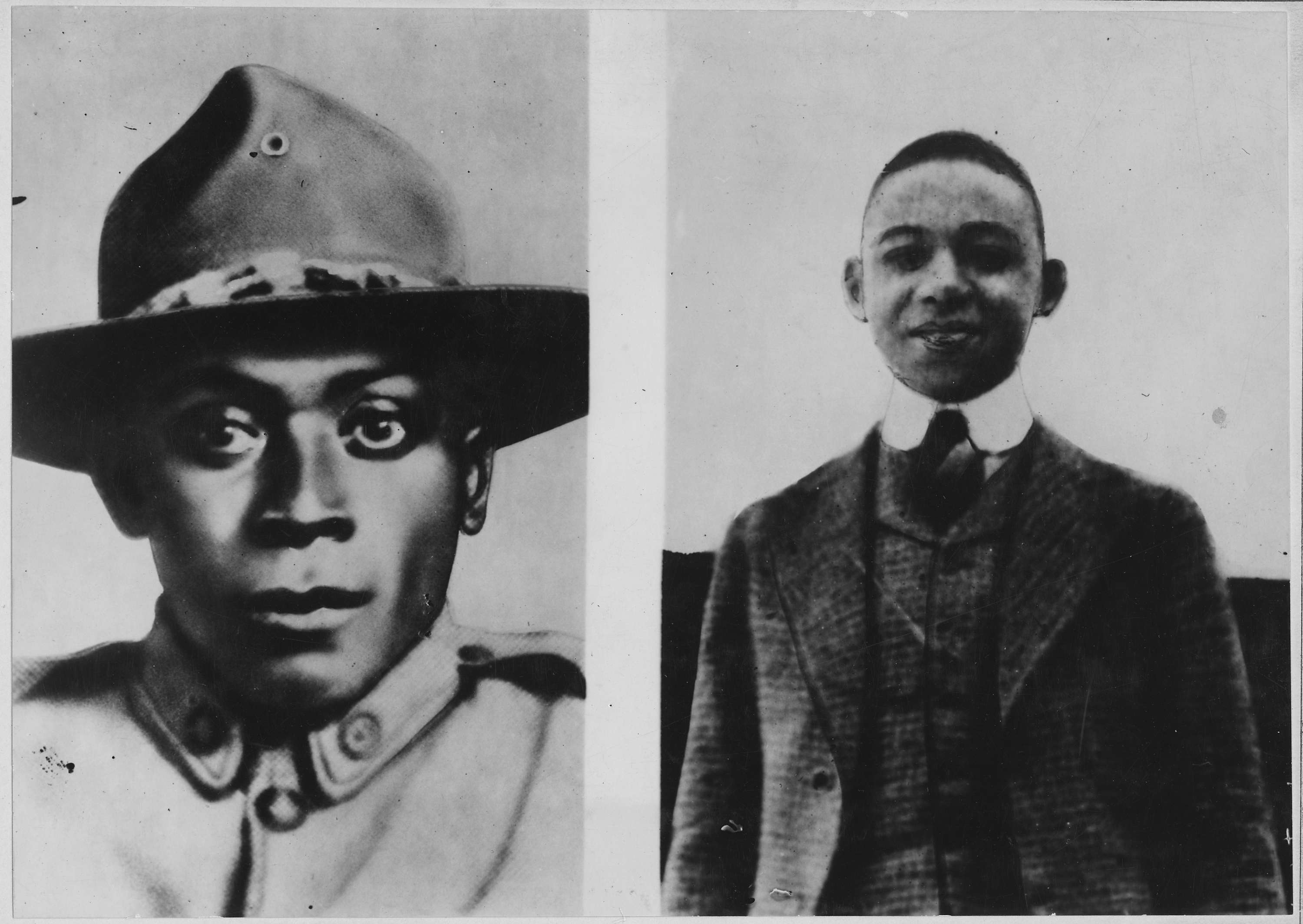President Wilson Calls for an End to Mob Violence During WWI, But for Who?
Making Connections
All documents and text associated with this activity are printed below, followed by a worksheet for student responses.Introduction
World War I was a turning point for the U.S. as a world economic & military power, but also in terms of the way citizens viewed their own place in American democracy. When President Wilson asked Congress to declare war on Germany in 1917, Americans were divided in how they viewed the war. Some Americans joined the patriotic fervor & volunteered to serve. Others safeguarded the nation in patriotic leagues at home. Many, however, felt that the war made clear the significant difference between our defense of democracy abroad & the lack of equal protection under law experienced by many at home. Using documents from the National Archives, you will make connections between the war effort and America's practice of lynching.Name:
Class:
Class:
Worksheet
President Wilson Calls for an End to Mob Violence During WWI, But for Who?
Making Connections
Examine the documents and text included in this activity. Fill in any blanks in the sequence with your thoughts and write your conclusion response in the space provided.Examine the 5 sets of documents in order and in detail ideally with a partner. It would be a good idea to use the National Archives document analysis worksheets to really analyze each document (http://www.archives.gov/education/lessons/worksheets/). After studying each section of documents, there will be discussion and reflection questions to consider with your partner.
Letter to President Wilson from the League of American Patriots Regarding Lynching, with Enclosed United States Committee on Public Information Official Bulletin
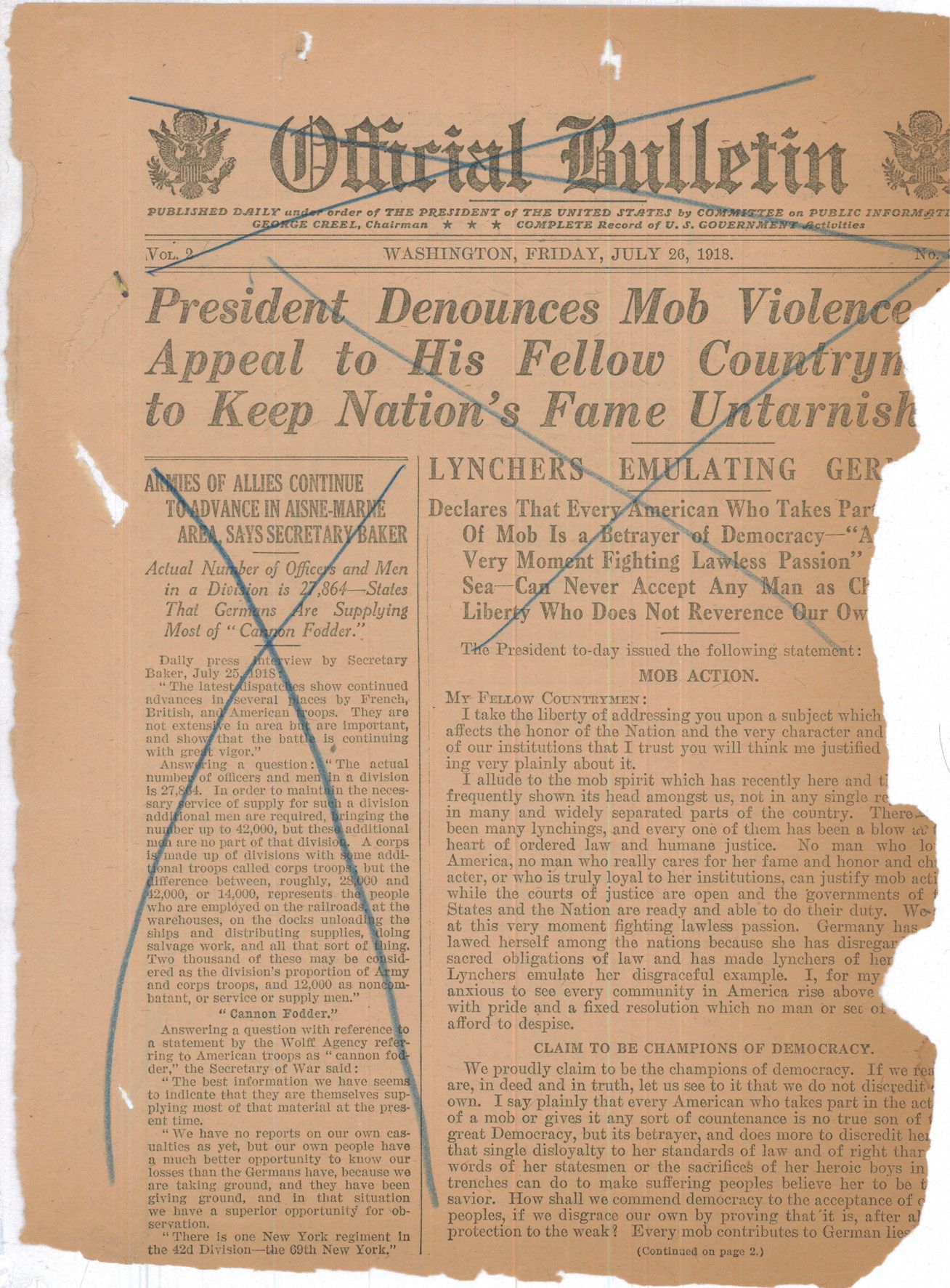
What do you think the purpose of Wilson's speech was? Who was he trying to protect? How do you think people responded to this speech? How might some German Americans have reacted? How might some African Americans have reacted?
Letter to President Wilson from the League of American Patriots Regarding Lynching, with Enclosed United States Committee on Public Information Official Bulletin
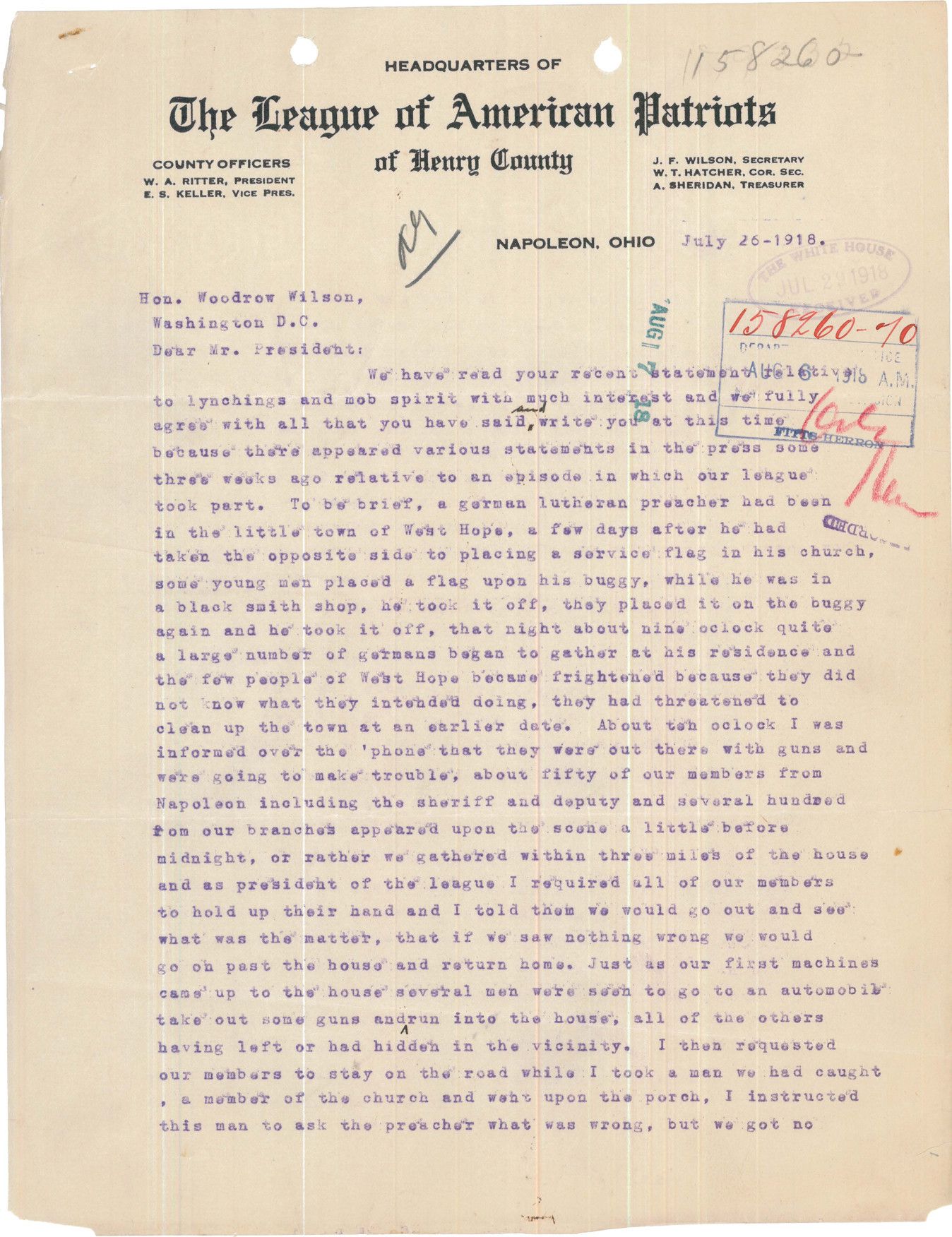
American Protective League to U. S. Food Administration re: Carl A. Rink

How do you think the documents from two different patriotic organizations relate to President Wilson's speech denouncing mob violence? What was the purpose specifically of the letter from the League of American Patriots? What do you think these organizations thought their role was in defending the United States?
"Beat back the HUN with LIBERTY BONDS."
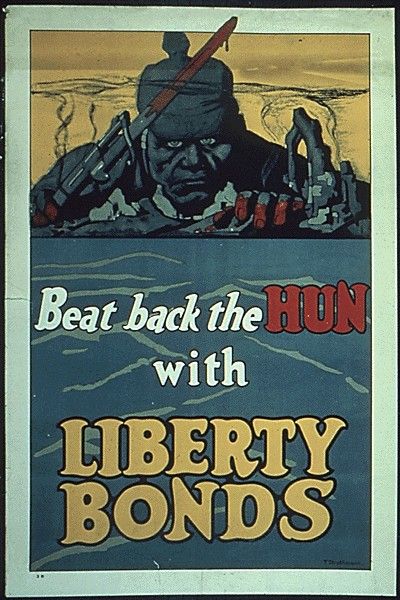
The World Cannot Live Half Slave, Half Free.

"Sugar means Ships. The consumption of Sugar Sweetened drinks Must Be Reduced. For your beverages 400 million lbs. of sugar wer imported in Ships last year. Every ship is needed to carry soldiers and

What messages did these government propaganda posters send to the American public? How do you think these posters relate to the work of the patriotic organizations?
Letter from Archibald H. Grimke, President of the District of Columbia Branch of the National Association for the Advancement of Colored People, to the President Regarding Figures for Lynchings, with Enclosed Clipping
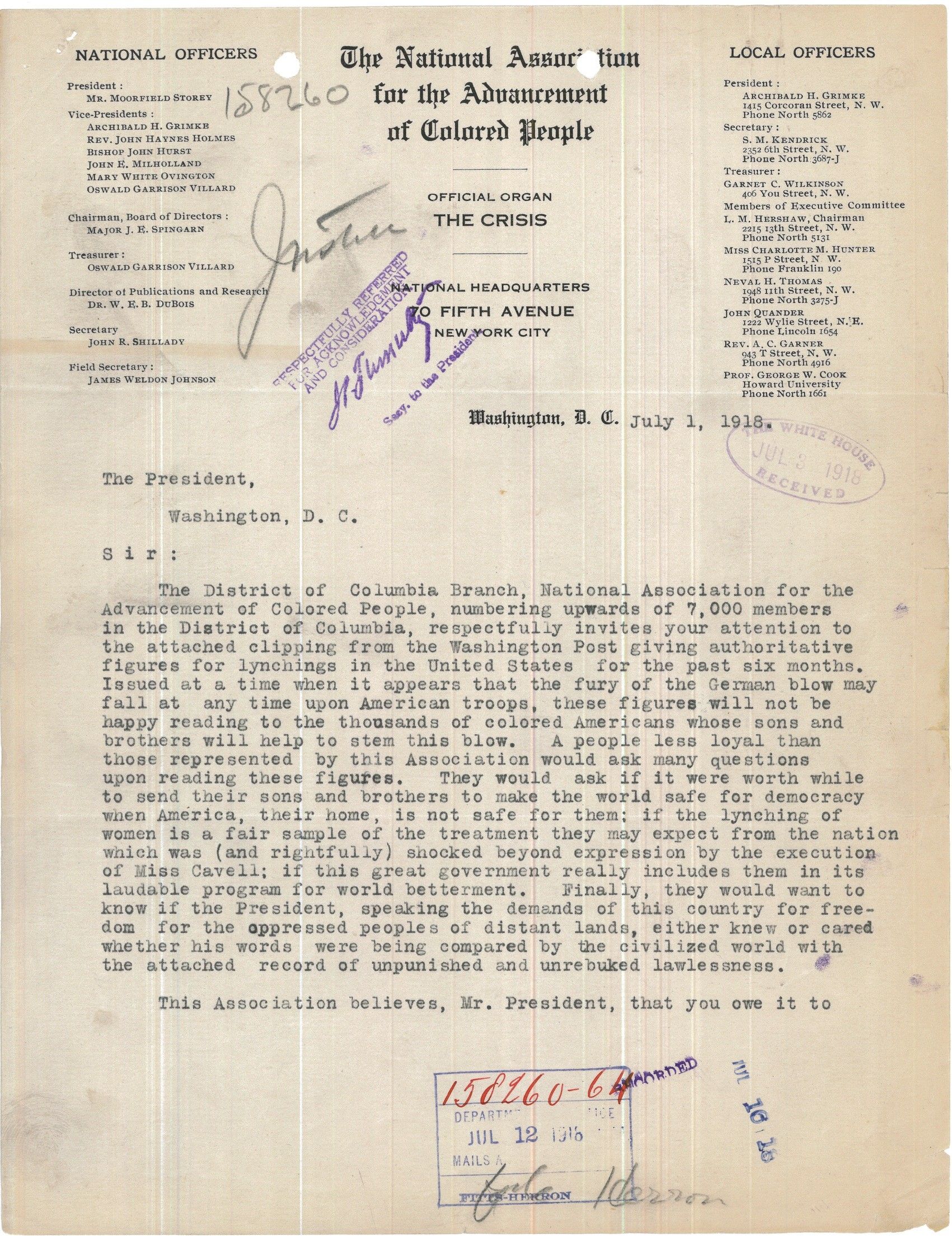
Telegram from M. Cravath Simpson to President Woodrow Wilson Urging a Federal Lynching Law
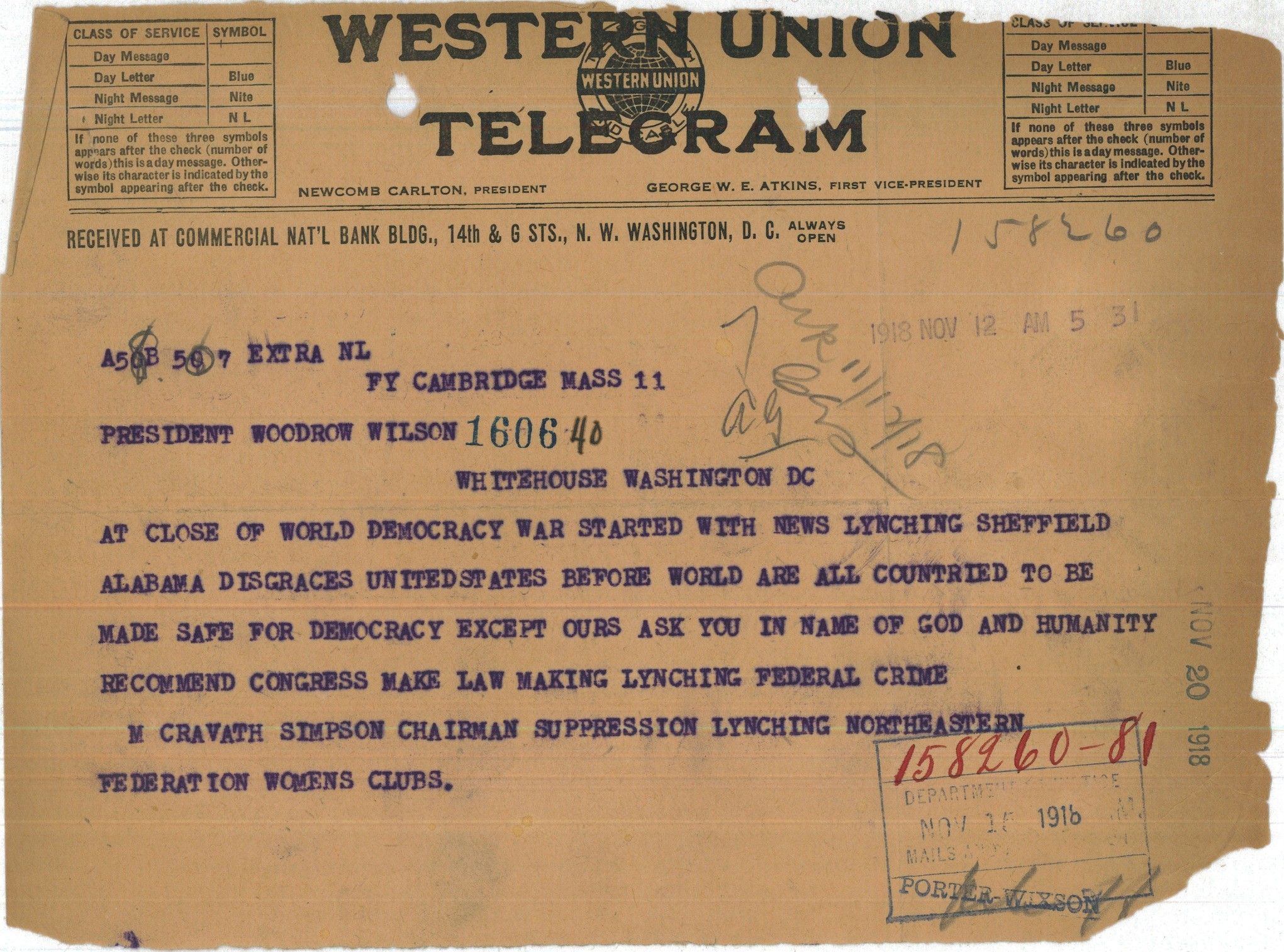
Letter from Charles Williams to President Woodrow Wilson Regarding Lynching, with Enclosed Article about Killings and the Storming of a Jail in Winston-Salem, N.C.

Letter from Charles Douglas to Attorney General A.M. Palmer Regarding Lynching

Letter from Attorney James Ray of St. Louis, Mo. to Attorney General Hon. A. Mitchell Palmer Regarding Mob Violence
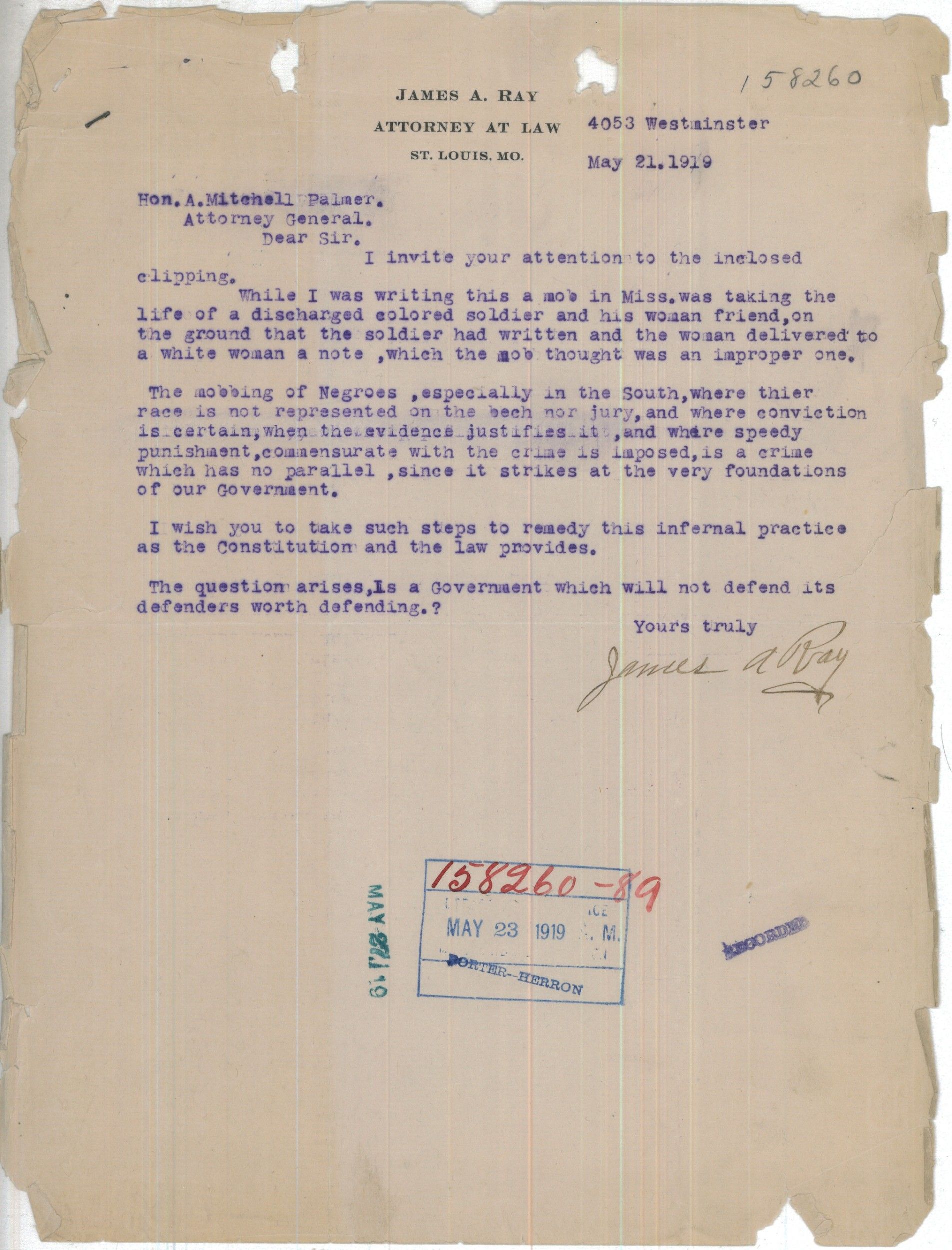
Letter from the Assistant Attorney General to Attorney James A. Ray in Response to Ray's Letter Complaining of the Lynching of a Discharged Colored Soldier by a Mob in Mississippi
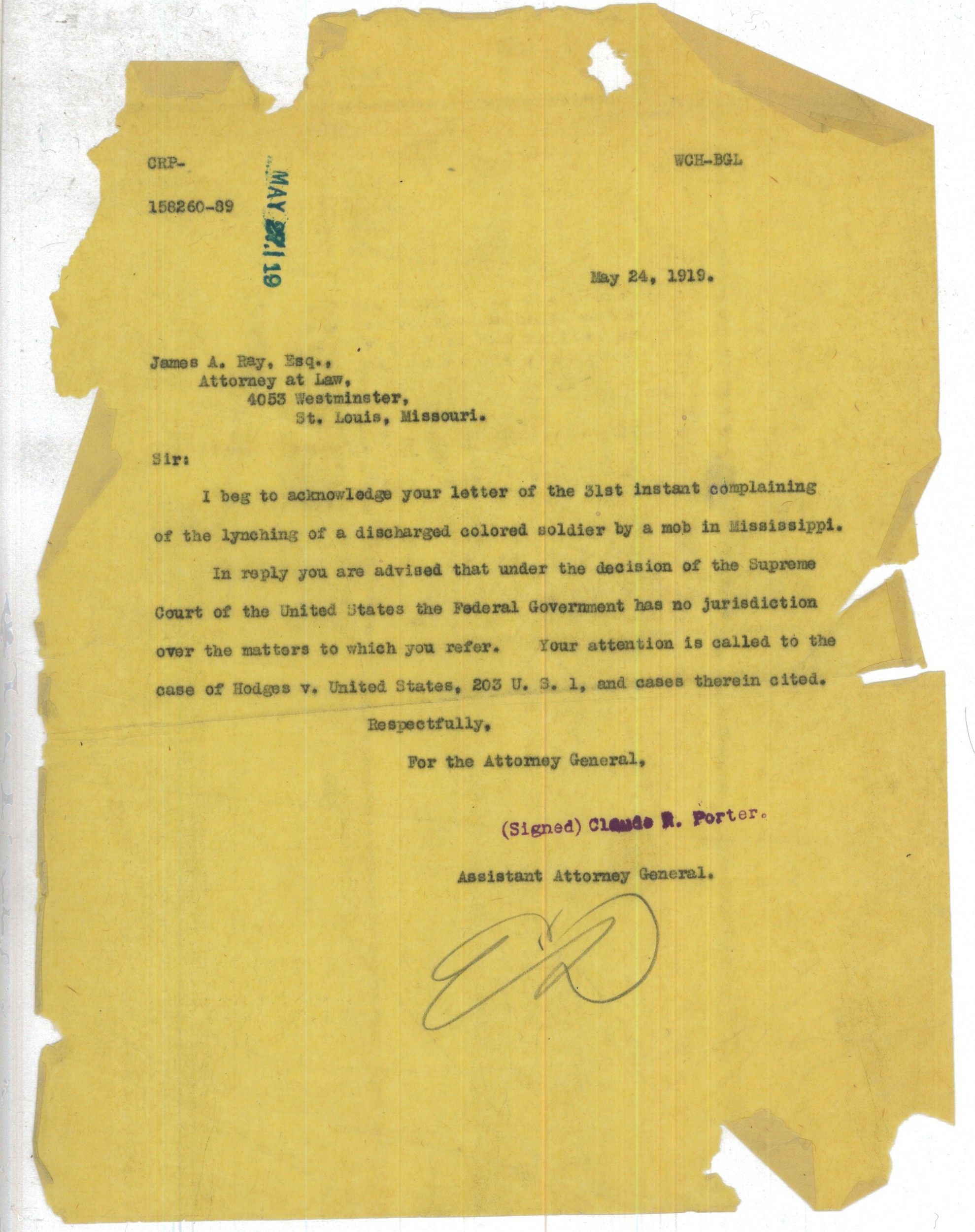
How did African Americans and their ally organizations respond to President Wilson's speech? How did they view the motives of the United States involvement in the war? How did the Attorney General's office respond to inquiries asking them intervene in cases of lynching? Do you think this is indicative of the government's response to other similar letters? What connections can be made between the propaganda posters and these documents about lynching?
Negro draftees ready for service. Lexington, Kentucky.
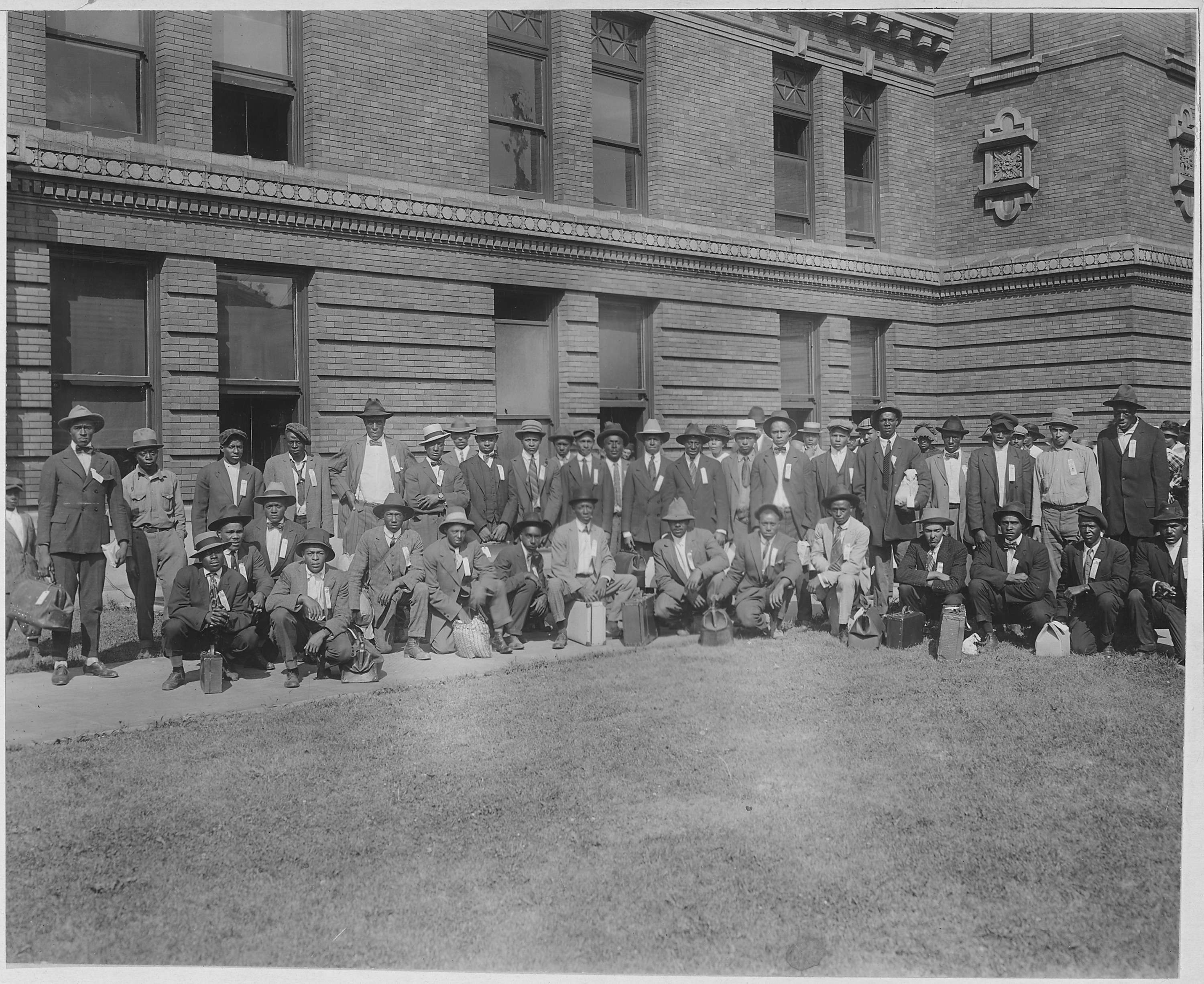
Manufacturing spiral puttees at plant of Alexander Propper & Company, New York City. Preparing the puttees for bailing. [African-American women working.]
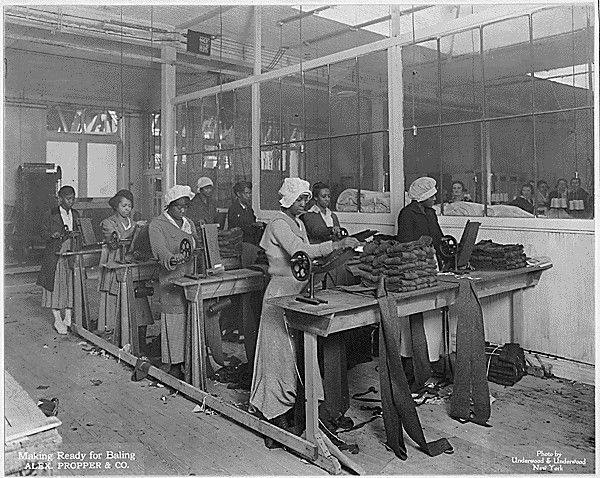
American Negro battalion building railroad. American Negro soldiers building a railroad in France
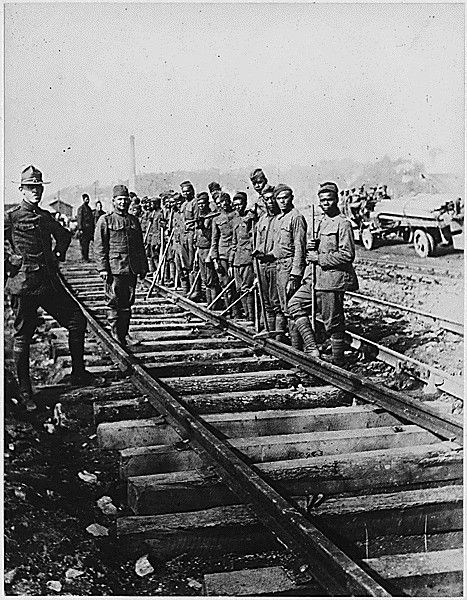
How they did it over there. [African American] troops of the 505th Engineers that returned on S.S. ...

Two Americans win Croix De Guerre. These African American fighters routed a German raiding party numerically stronger. The two men, Henry Johnson, left, and Neadham Roberts, right, are members of the 369th Regiment Infantry. Each has been decorated w
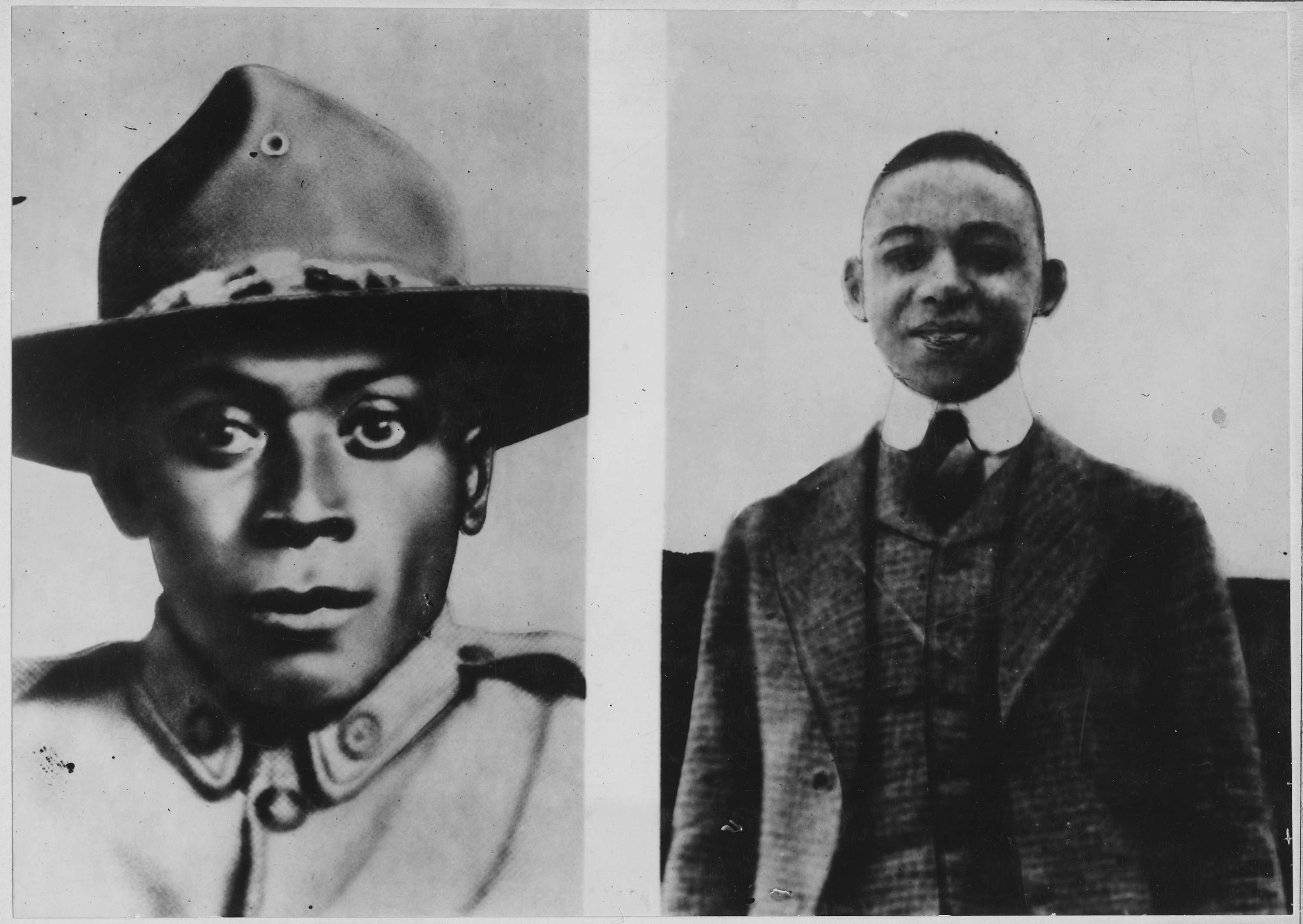
What details did you notice in the photographs? In what ways did African Americans serve the United States in WWI? How do you think the images about African Americans serving in WWI connect to the documents about ending lynching?
Now that you've examined and reflected on these documents, try to think about how they all fit together and what story they tell.
1
Activity Element
Letter to President Wilson from the League of American Patriots Regarding Lynching, with Enclosed United States Committee on Public Information Official Bulletin
Page 3

2
Activity Element
Letter to President Wilson from the League of American Patriots Regarding Lynching, with Enclosed United States Committee on Public Information Official Bulletin
Page 1

3
Activity Element
American Protective League to U. S. Food Administration re: Carl A. Rink
Page 1

4
Activity Element
"Beat back the HUN with LIBERTY BONDS."
Page 1

5
Activity Element
The World Cannot Live Half Slave, Half Free.
Page 1

6
Activity Element
"Sugar means Ships. The consumption of Sugar Sweetened drinks Must Be Reduced. For your beverages 400 million lbs. of sugar wer imported in Ships last year. Every ship is needed to carry soldiers and
Page 1

7
Activity Element
Letter from Archibald H. Grimke, President of the District of Columbia Branch of the National Association for the Advancement of Colored People, to the President Regarding Figures for Lynchings, with Enclosed Clipping
Page 1

8
Activity Element
Telegram from M. Cravath Simpson to President Woodrow Wilson Urging a Federal Lynching Law
Page 1

9
Activity Element
Letter from Charles Williams to President Woodrow Wilson Regarding Lynching, with Enclosed Article about Killings and the Storming of a Jail in Winston-Salem, N.C.
Page 1

10
Activity Element
Letter from Charles Douglas to Attorney General A.M. Palmer Regarding Lynching
Page 1

11
Activity Element
Letter from Attorney James Ray of St. Louis, Mo. to Attorney General Hon. A. Mitchell Palmer Regarding Mob Violence
Page 1

12
Activity Element
Letter from the Assistant Attorney General to Attorney James A. Ray in Response to Ray's Letter Complaining of the Lynching of a Discharged Colored Soldier by a Mob in Mississippi
Page 1

13
Activity Element
Negro draftees ready for service. Lexington, Kentucky.
Page 1

14
Activity Element
Manufacturing spiral puttees at plant of Alexander Propper & Company, New York City. Preparing the puttees for bailing. [African-American women working.]
Page 1

15
Activity Element
American Negro battalion building railroad. American Negro soldiers building a railroad in France
Page 1

16
Activity Element
How they did it over there. [African American] troops of the 505th Engineers that returned on S.S. ...
Page 1

17
Activity Element
Two Americans win Croix De Guerre. These African American fighters routed a German raiding party numerically stronger. The two men, Henry Johnson, left, and Neadham Roberts, right, are members of the 369th Regiment Infantry. Each has been decorated w
Page 1

Conclusion
President Wilson Calls for an End to Mob Violence During WWI, But for Who?
Making Connections
The action's & rhetoric of the federal government during WWI caused Americans to question whether America was living up to its own responsibilities as a democracy. President Wilson’s call to end mob violence was meant to encourage Americans working to help the war effort restrain themselves from using violence to root out the “disloyal” pro-German element. African Americans & their allies, however, found it particularly difficult to understand how they could serve as patriots in the war & yet be lynched themselves outside of the confines of the law. Email an answer to this question to the teacher: Based on the documents you read, do you think that the United States government lived up to its rights & responsibilities for African Americans?Your Response
Document
Letter to President Wilson from the League of American Patriots Regarding Lynching, with Enclosed United States Committee on Public Information Official Bulletin
7/26/1918
The League of American Patriots sent this letter and United States Committee on Public Information Official Bulletin to President Wilson.
This document was digitized by teachers in our Primarily Teaching 2013 Summer Workshop in Washington, DC.
This document was digitized by teachers in our Primarily Teaching 2013 Summer Workshop in Washington, DC.
This primary source comes from the General Records of the Department of Justice.
National Archives Identifier: 31491319
Full Citation: Letter to President Wilson from the League of American Patriots Regarding Lynching, with Enclosed United States Committee on Public Information Official Bulletin; 7/26/1918; 158260-70; 158260, 1904 - 1974; Straight Numerical Files, 1904 - 1974; General Records of the Department of Justice, ; National Archives at College Park, College Park, MD. [Online Version, https://docsteach.org/documents/document/letter-to-president-lynching, April 26, 2024]Letter to President Wilson from the League of American Patriots Regarding Lynching, with Enclosed United States Committee on Public Information Official Bulletin
Page 1
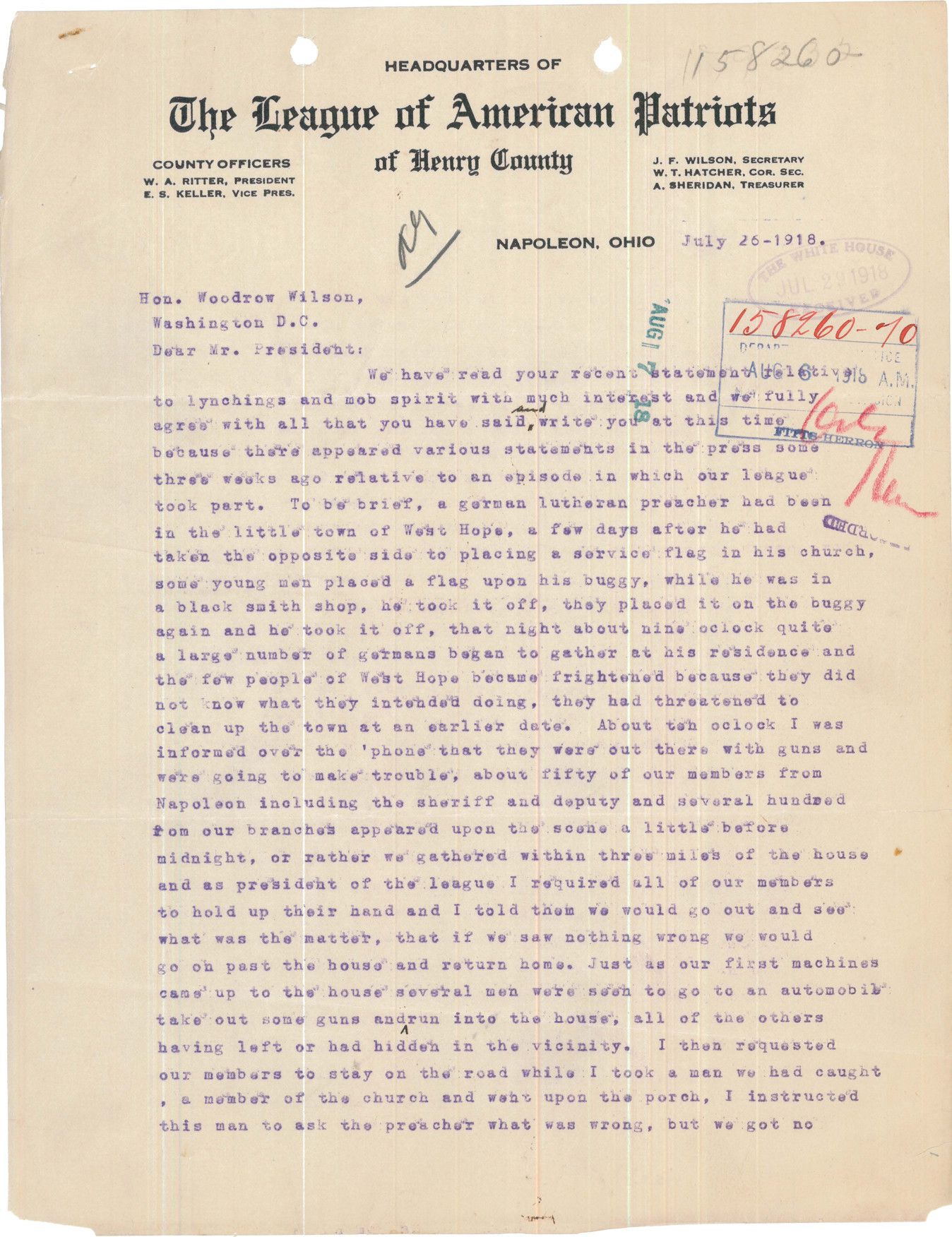
Letter to President Wilson from the League of American Patriots Regarding Lynching, with Enclosed United States Committee on Public Information Official Bulletin
Page 2
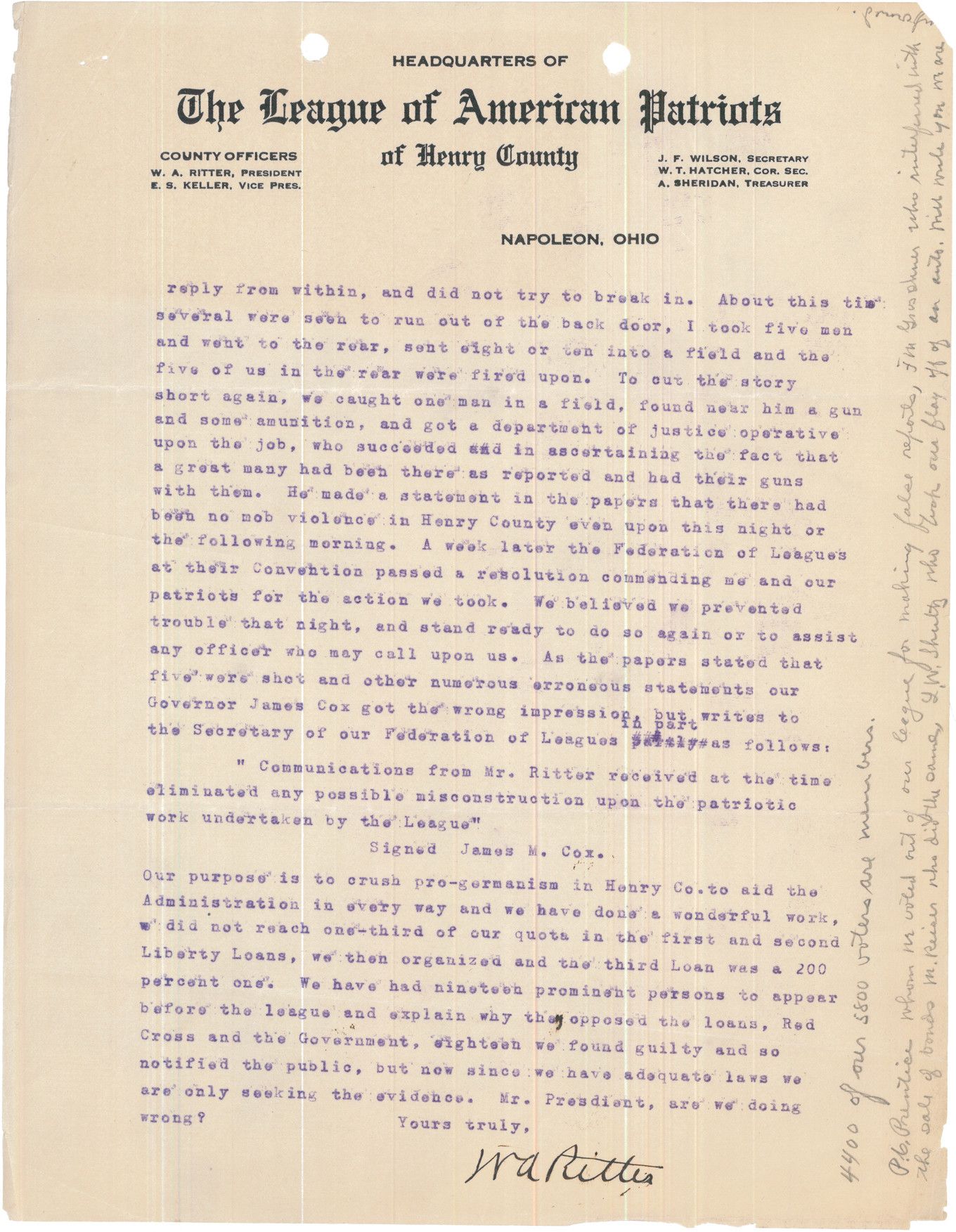
Letter to President Wilson from the League of American Patriots Regarding Lynching, with Enclosed United States Committee on Public Information Official Bulletin
Page 3
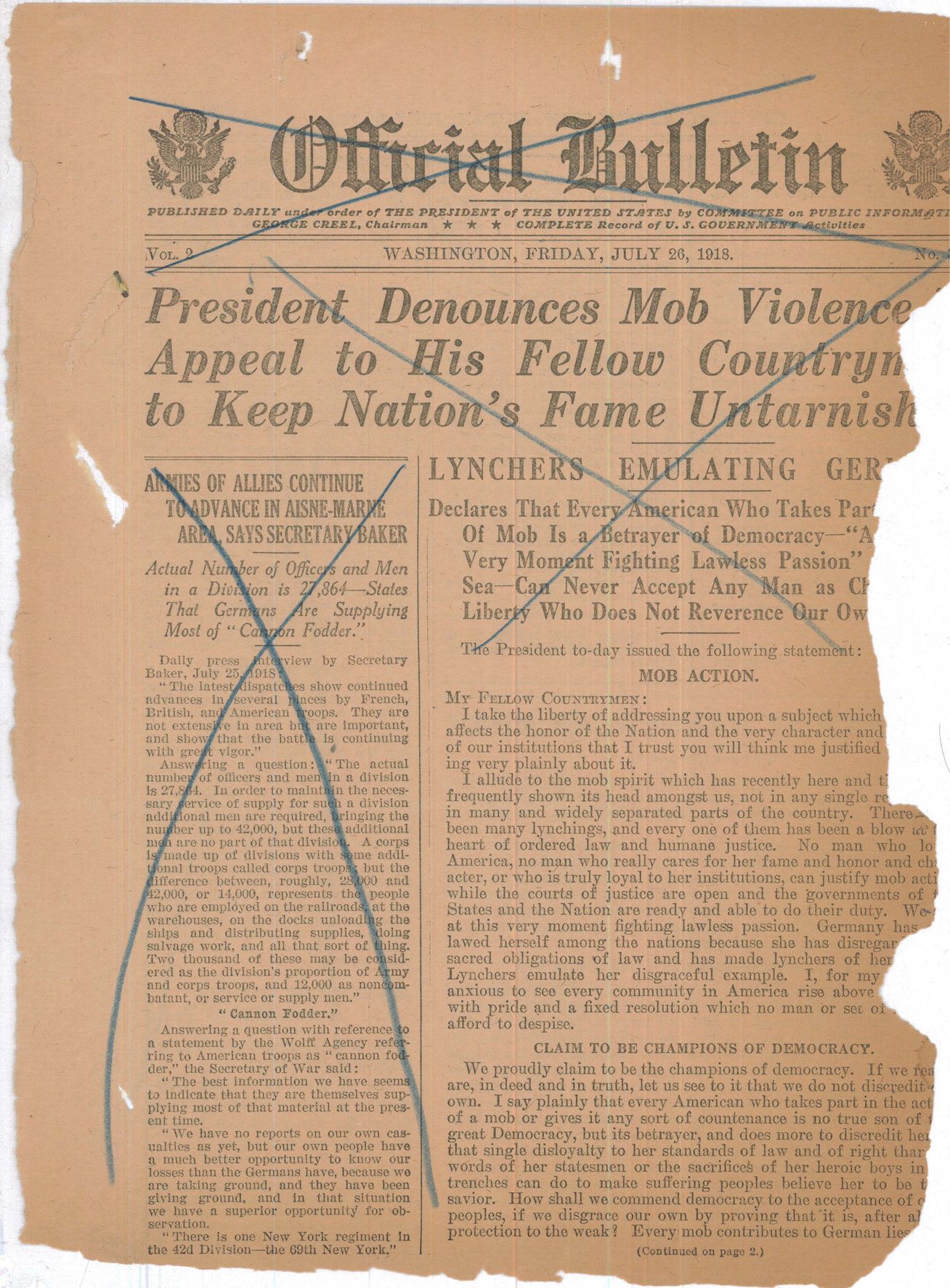
Letter to President Wilson from the League of American Patriots Regarding Lynching, with Enclosed United States Committee on Public Information Official Bulletin
Page 4
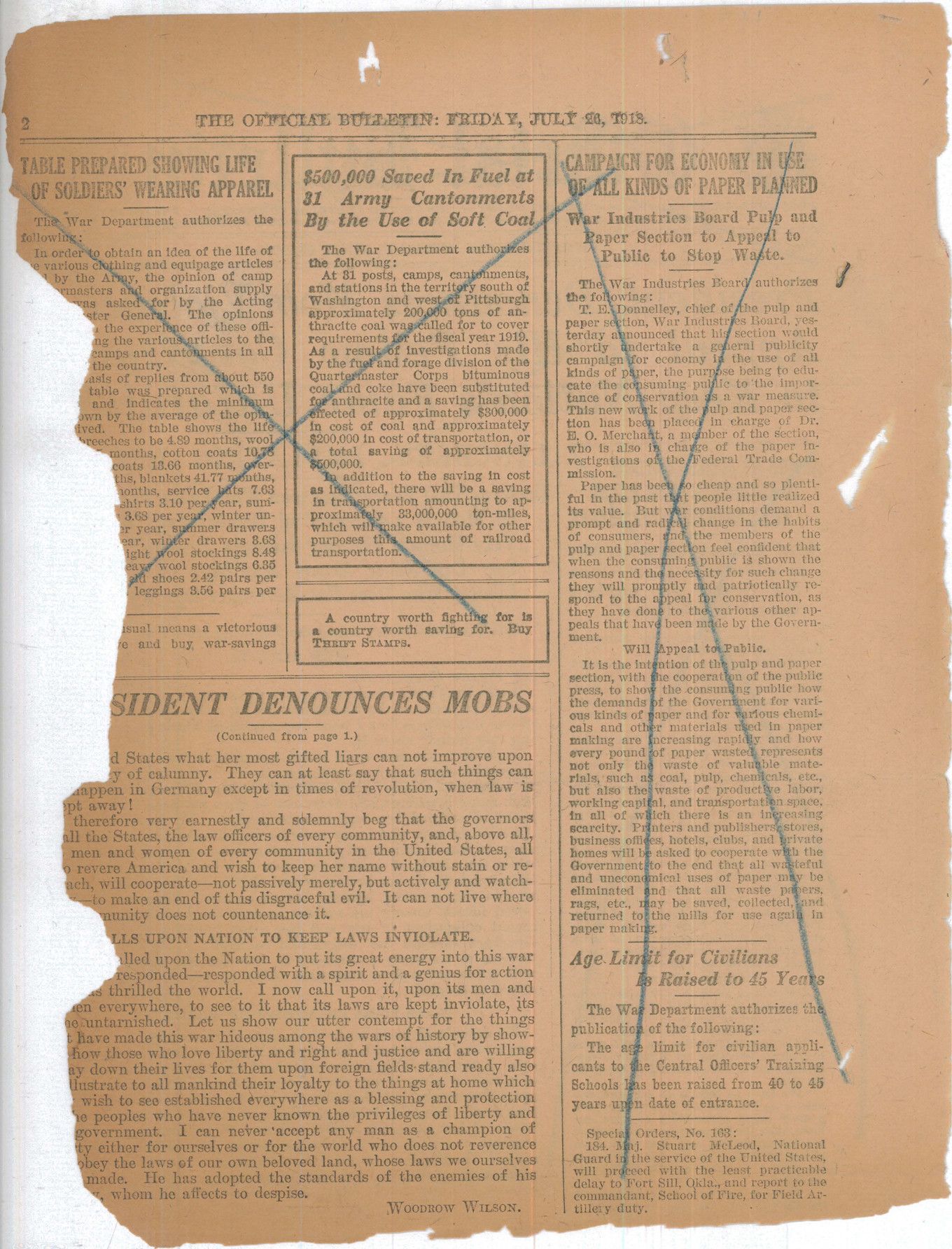
Document
Letter to President Wilson from the League of American Patriots Regarding Lynching, with Enclosed United States Committee on Public Information Official Bulletin
7/26/1918
The League of American Patriots sent this letter and United States Committee on Public Information Official Bulletin to President Wilson.
This document was digitized by teachers in our Primarily Teaching 2013 Summer Workshop in Washington, DC.
This document was digitized by teachers in our Primarily Teaching 2013 Summer Workshop in Washington, DC.
This primary source comes from the General Records of the Department of Justice.
National Archives Identifier: 31491319
Full Citation: Letter to President Wilson from the League of American Patriots Regarding Lynching, with Enclosed United States Committee on Public Information Official Bulletin; 7/26/1918; 158260-70; 158260, 1904 - 1974; Straight Numerical Files, 1904 - 1974; General Records of the Department of Justice, ; National Archives at College Park, College Park, MD. [Online Version, https://docsteach.org/documents/document/letter-to-president-lynching, April 26, 2024]Letter to President Wilson from the League of American Patriots Regarding Lynching, with Enclosed United States Committee on Public Information Official Bulletin
Page 1

Letter to President Wilson from the League of American Patriots Regarding Lynching, with Enclosed United States Committee on Public Information Official Bulletin
Page 2

Letter to President Wilson from the League of American Patriots Regarding Lynching, with Enclosed United States Committee on Public Information Official Bulletin
Page 3

Letter to President Wilson from the League of American Patriots Regarding Lynching, with Enclosed United States Committee on Public Information Official Bulletin
Page 4

Document
American Protective League to U. S. Food Administration re: Carl A. Rink
6/27/1918
This primary source comes from the Records of the U.S. Food Administration.
National Archives Identifier: 295923
Full Citation: American Protective League to U. S. Food Administration re: Carl A. Rink; 6/27/1918; Records of the U.S. Food Administration, . [Online Version, https://docsteach.org/documents/document/american-protective-league-to-u-s-food-administration-re-carl-a-rink, April 26, 2024]American Protective League to U. S. Food Administration re: Carl A. Rink
Page 1
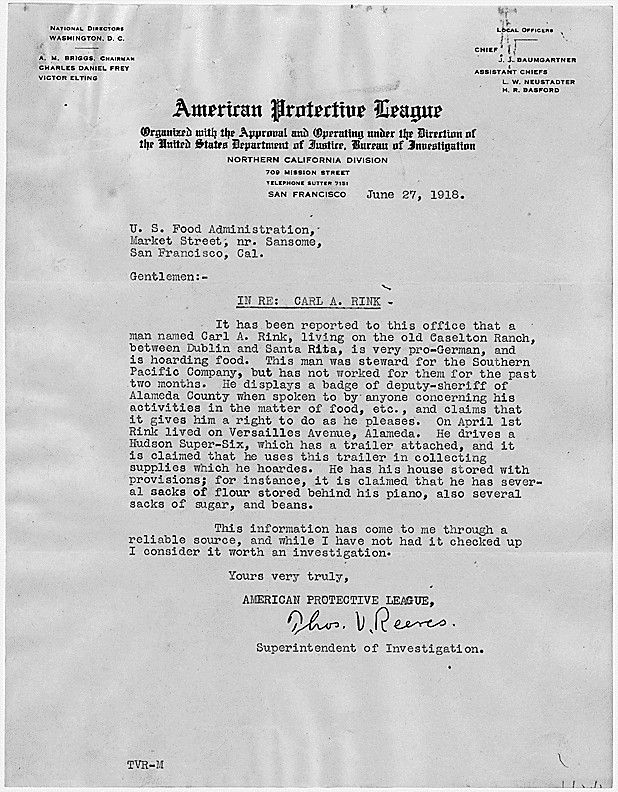
Document
'Beat back the HUN with LIBERTY BONDS.'
ca. 1918
This primary source comes from the Records of the U.S. Food Administration.
National Archives Identifier: 512638
Full Citation: Poster 4-P-200; 'Beat back the HUN with LIBERTY BONDS.'; ca. 1918; World War I Posters, 1917 - 1919; Records of the U.S. Food Administration, ; National Archives at College Park, College Park, MD. [Online Version, https://docsteach.org/documents/document/beat-back-the-hun, April 26, 2024]'Beat back the HUN with LIBERTY BONDS.'
Page 1

Document
The World Cannot Live Half Slave, Half Free.
ca. 1917 - ca. 1919
This primary source comes from the Records of the U.S. Food Administration.
National Archives Identifier: 512444
Full Citation: The World Cannot Live Half Slave, Half Free.; ca. 1917 - ca. 1919; Records of the U.S. Food Administration, . [Online Version, https://docsteach.org/documents/document/the-world-cannot-live-half-slave-half-free, April 26, 2024]The World Cannot Live Half Slave, Half Free.
Page 1

Document
'Sugar means Ships. The consumption of Sugar Sweetened drinks Must Be Reduced. For your beverages 400 million lbs. of sugar wer imported in Ships last year. Every ship is needed to carry soldiers and
ca. 1917-1919
This primary source comes from the Records of the U.S. Food Administration.
National Archives Identifier: 512526
Full Citation: 'Sugar means Ships. The consumption of Sugar Sweetened drinks Must Be Reduced. For your beverages 400 million lbs. of sugar wer imported in Ships last year. Every ship is needed to carry soldiers and ; ca. 1917-1919; Records of the U.S. Food Administration, . [Online Version, https://docsteach.org/documents/document/sugar-means-ships, April 26, 2024]'Sugar means Ships. The consumption of Sugar Sweetened drinks Must Be Reduced. For your beverages 400 million lbs. of sugar wer imported in Ships last year. Every ship is needed to carry soldiers and
Page 1
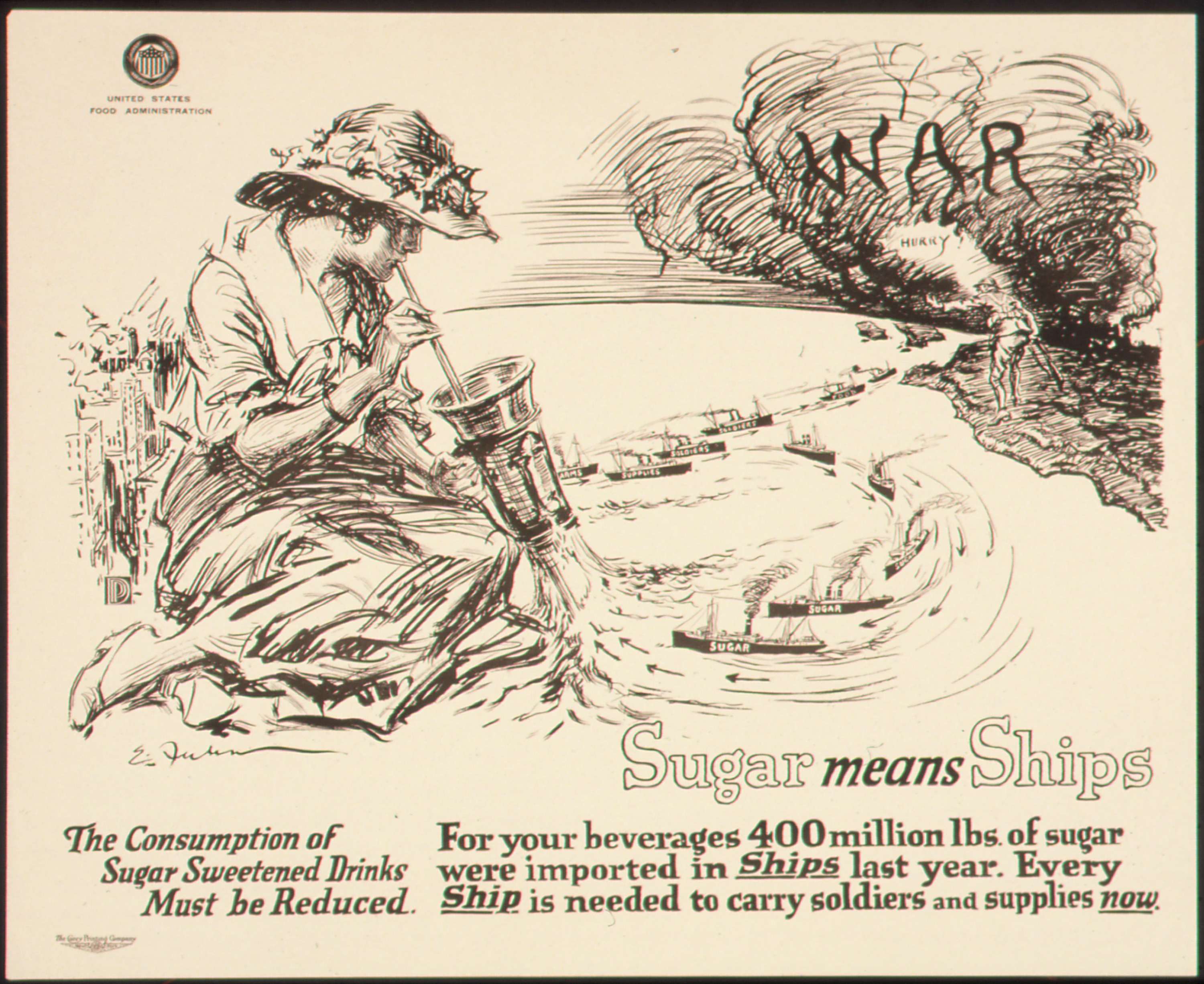
Document
Letter from Archibald H. Grimke, President of the District of Columbia Branch of the National Association for the Advancement of Colored People, to the President Regarding Figures for Lynchings, with Enclosed Clipping
7/1/1918
Archibald H. Grimke, the president of the District of Columbia Branch of the National Association for the Advancement of Colored People (NAACP), sent this letter to President Woodrow Wilson regarding figures for lynchings. It includes a newspaper clipping with the headline "35 Lynched in U.S. in Past 6 Months."
This document was digitized by teachers in our Primarily Teaching 2013 Summer Workshop in Washington, DC.
This document was digitized by teachers in our Primarily Teaching 2013 Summer Workshop in Washington, DC.
This primary source comes from the General Records of the Department of Justice.
National Archives Identifier: 31491318
Full Citation: Letter from Archibald H. Grimke, President of the District of Columbia Branch of the National Association for the Advancement of Colored People, to the President Regarding Figures for Lynchings, with Enclosed Clipping; 7/1/1918; 158260-64; 158260, 1904 - 1974; Straight Numerical Files, 1904 - 1974; General Records of the Department of Justice, ; National Archives at College Park, College Park, MD. [Online Version, https://docsteach.org/documents/document/lynching-figures, April 26, 2024]Letter from Archibald H. Grimke, President of the District of Columbia Branch of the National Association for the Advancement of Colored People, to the President Regarding Figures for Lynchings, with Enclosed Clipping
Page 1
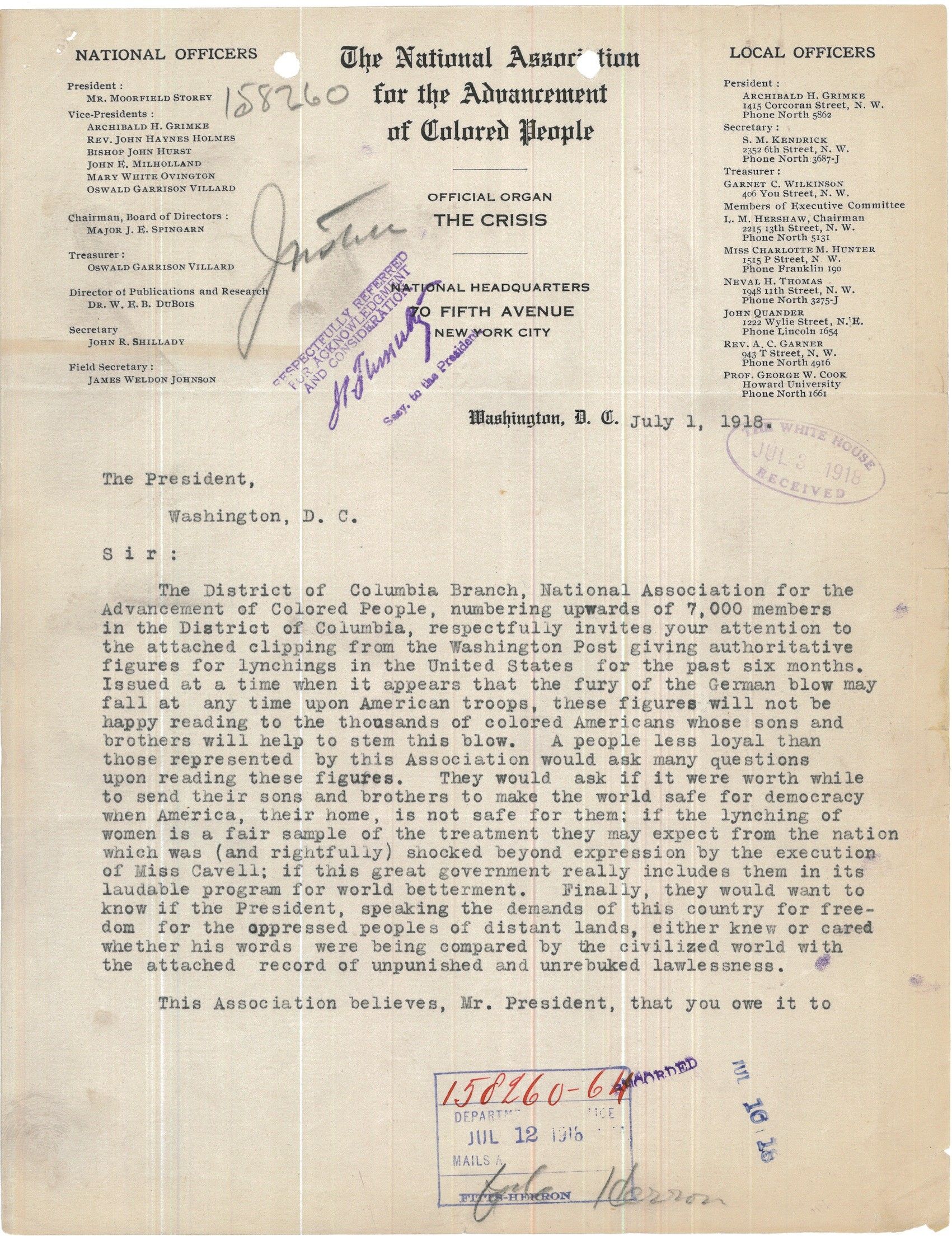
Letter from Archibald H. Grimke, President of the District of Columbia Branch of the National Association for the Advancement of Colored People, to the President Regarding Figures for Lynchings, with Enclosed Clipping
Page 2
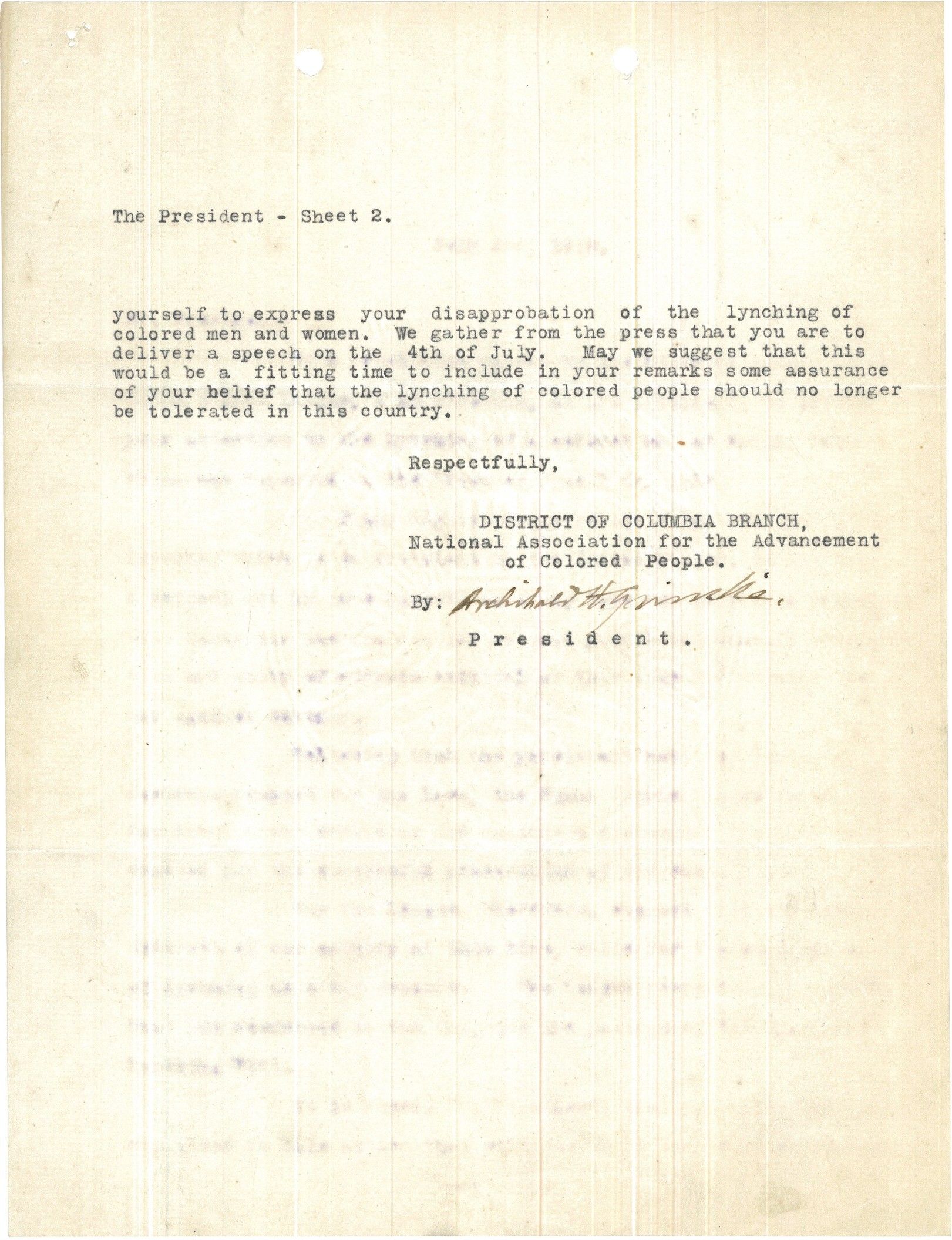
Letter from Archibald H. Grimke, President of the District of Columbia Branch of the National Association for the Advancement of Colored People, to the President Regarding Figures for Lynchings, with Enclosed Clipping
Page 3

Document
Telegram from M. Cravath Simpson to President Woodrow Wilson Urging a Federal Lynching Law
11/12/1918
This telegram was sent by M. Cravath Simpson to President Woodrow Wilson.
This document was digitized by teachers in our Primarily Teaching 2013 Summer Workshop in Washington, DC.
This document was digitized by teachers in our Primarily Teaching 2013 Summer Workshop in Washington, DC.
This primary source comes from the General Records of the Department of Justice.
National Archives Identifier: 31491322
Full Citation: Telegram from M. Cravath Simpson to President Woodrow Wilson Urging a Federal Lynching Law; 11/12/1918; 158260-81; 158260, 1904 - 1974; Straight Numerical Files, 1904 - 1974; General Records of the Department of Justice, ; National Archives at College Park, College Park, MD. [Online Version, https://docsteach.org/documents/document/telegram-federal-lynching-law, April 26, 2024]Telegram from M. Cravath Simpson to President Woodrow Wilson Urging a Federal Lynching Law
Page 1

Document
Letter from Charles Williams to President Woodrow Wilson Regarding Lynching, with Enclosed Article about Killings and the Storming of a Jail in Winston-Salem, N.C.
11/21/1918
Charles Williams sent this letter and enclosed newspaper article about killings and the storming of a jail in Winston-Salem, N.C. to President Woodrow Wilson.
This document was digitized by teachers in our Primarily Teaching 2013 Summer Workshop in Washington, DC.
This document was digitized by teachers in our Primarily Teaching 2013 Summer Workshop in Washington, DC.
This primary source comes from the General Records of the Department of Justice.
National Archives Identifier: 31491323
Full Citation: Letter from Charles Williams to President Woodrow Wilson Regarding Lynching, with Enclosed Article about Killings and the Storming of a Jail in Winston-Salem, N.C.; 11/21/1918; 158260-83; 158260, 1904 - 1974; Straight Numerical Files, 1904 - 1974; General Records of the Department of Justice, ; National Archives at College Park, College Park, MD. [Online Version, https://docsteach.org/documents/document/letter-williams-lynching, April 26, 2024]Letter from Charles Williams to President Woodrow Wilson Regarding Lynching, with Enclosed Article about Killings and the Storming of a Jail in Winston-Salem, N.C.
Page 1
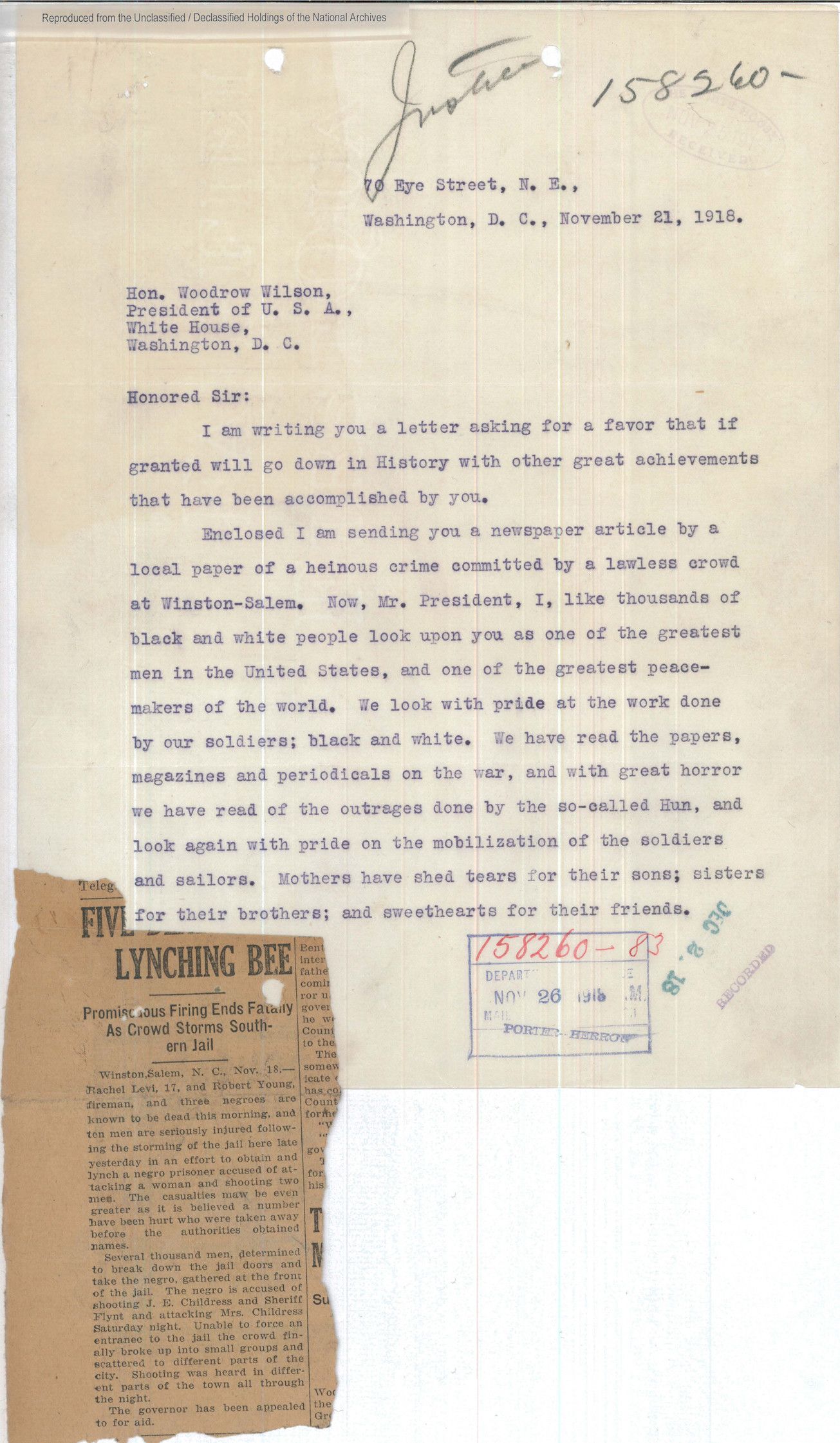
Letter from Charles Williams to President Woodrow Wilson Regarding Lynching, with Enclosed Article about Killings and the Storming of a Jail in Winston-Salem, N.C.
Page 2
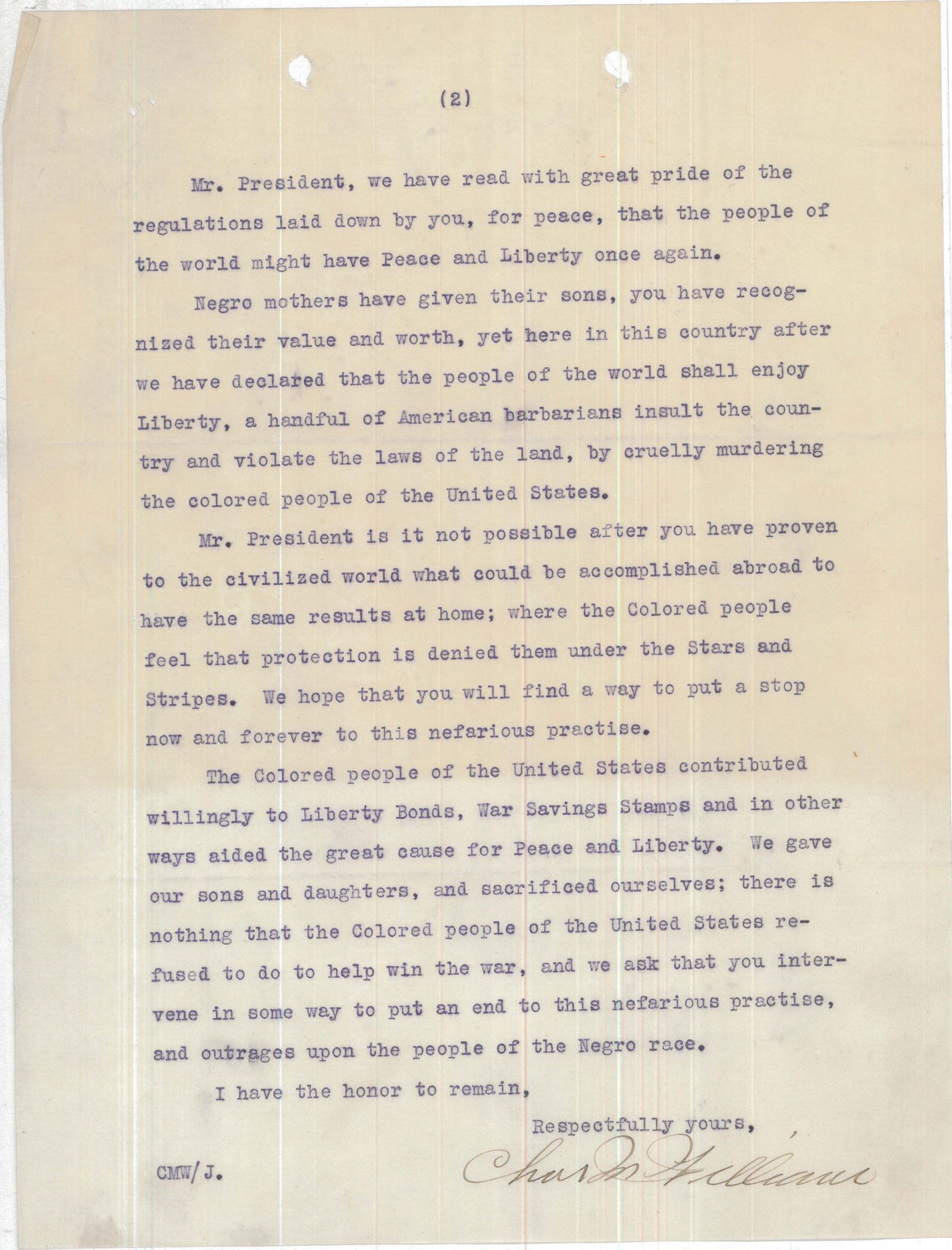
Document
Letter from Charles Douglas to Attorney General A.M. Palmer Regarding Lynching
5/20/1919
This document was digitized by teachers in our Primarily Teaching 2013 Summer Workshop in Washington, DC.
This primary source comes from the General Records of the Department of Justice.
National Archives Identifier: 31491317
Full Citation: Letter from Charles Douglas to Attorney General A.M. Palmer Regarding Lynching; 5/20/1919; 158260-88; 158260, 1904 - 1974; Straight Numerical Files, 1904 - 1974; General Records of the Department of Justice, ; National Archives at College Park, College Park, MD. [Online Version, https://docsteach.org/documents/document/letter-attorney-general-am-palmer-regarding-lynching, April 26, 2024]Letter from Charles Douglas to Attorney General A.M. Palmer Regarding Lynching
Page 1
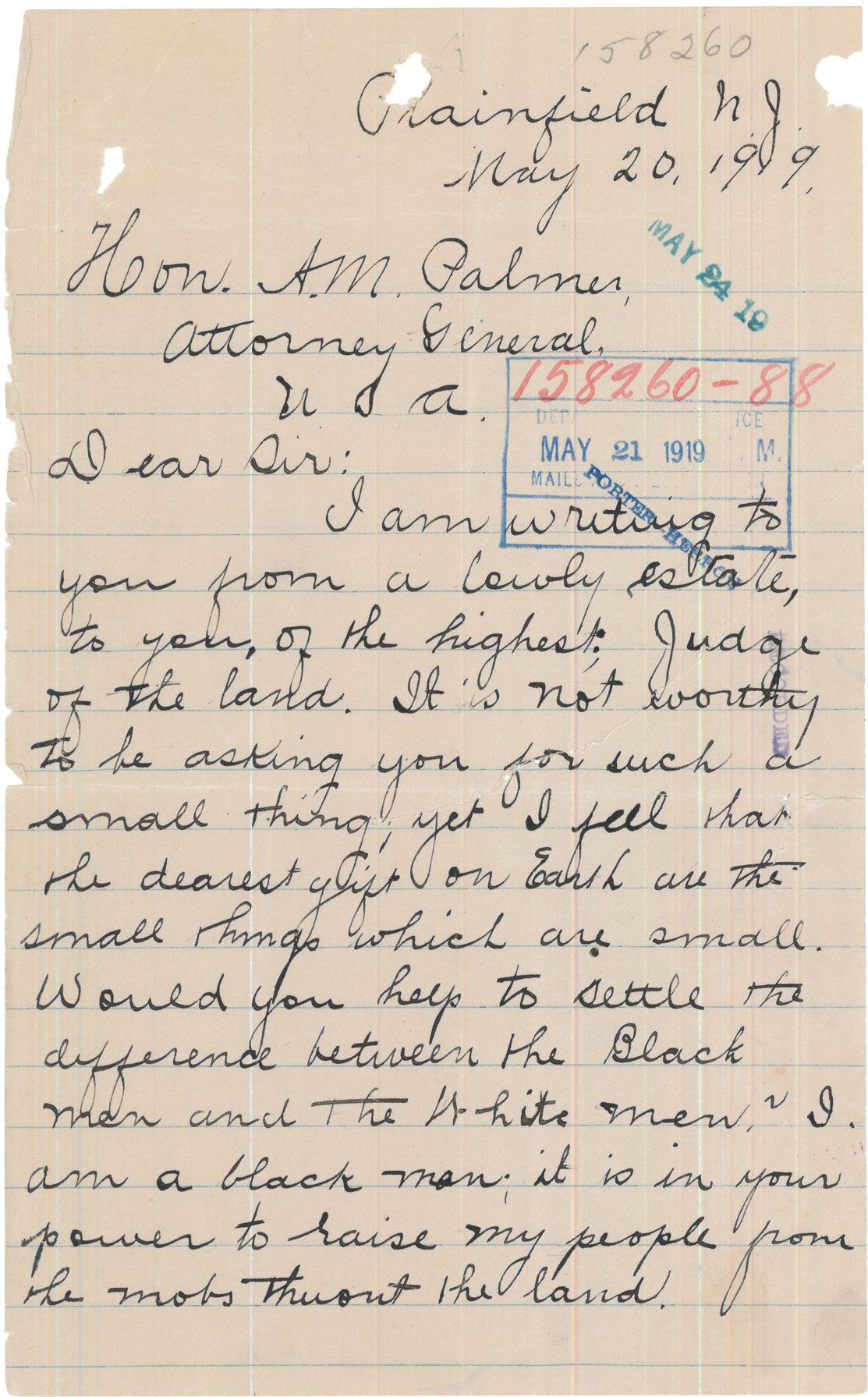
Letter from Charles Douglas to Attorney General A.M. Palmer Regarding Lynching
Page 2
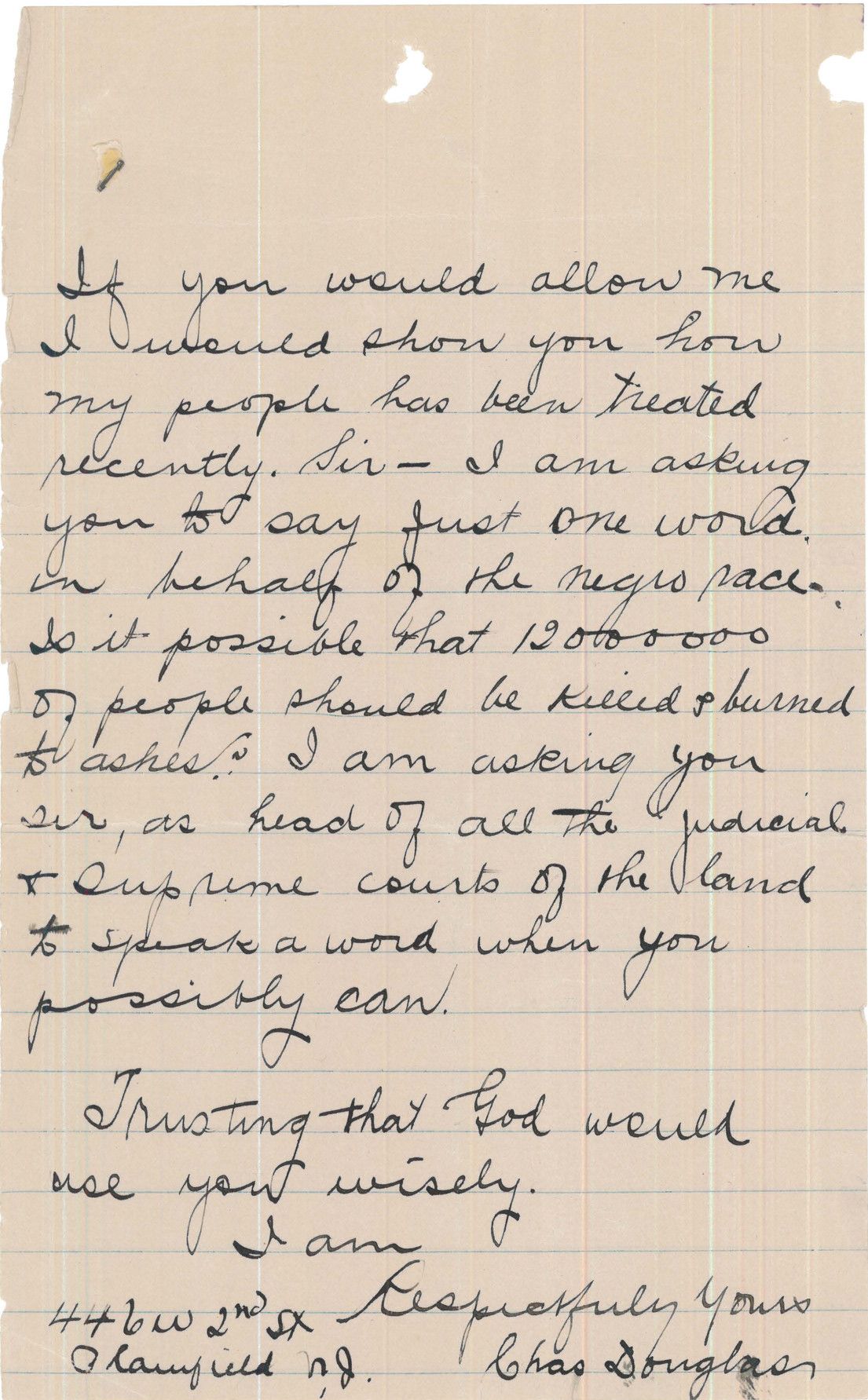
Document
Letter from Attorney James Ray of St. Louis, Mo. to Attorney General Hon. A. Mitchell Palmer Regarding Mob Violence
5/21/1919
This is a letter from Attorney James Ray of St. Louis, Missouri, to Attorney General Hon. A. Mitchell Palmer.
This document was digitized by teachers in our Primarily Teaching 2013 Summer Workshop in Washington, DC.
This document was digitized by teachers in our Primarily Teaching 2013 Summer Workshop in Washington, DC.
This primary source comes from the General Records of the Department of Justice.
National Archives Identifier: 31491320
Full Citation: Letter from Attorney James Ray of St. Louis, Mo. to Attorney General Hon. A. Mitchell Palmer Regarding Mob Violence; 5/21/1919; 158260-89; 158260, 1904 - 1974; Straight Numerical Files, 1904 - 1974; General Records of the Department of Justice, ; National Archives at College Park, College Park, MD. [Online Version, https://docsteach.org/documents/document/letter-mob-violence, April 26, 2024]Letter from Attorney James Ray of St. Louis, Mo. to Attorney General Hon. A. Mitchell Palmer Regarding Mob Violence
Page 1

Document
Letter from the Assistant Attorney General to Attorney James A. Ray in Response to Ray's Letter Complaining of the Lynching of a Discharged Colored Soldier by a Mob in Mississippi
5/24/1919
The Assistant Attorney General send this letter to Attorney James A. Ray in response to Ray's letter complaining of the lynching of a discharged "colored" soldier by a mob in Mississippi.
This document was digitized by teachers in our Primarily Teaching 2013 Summer Workshop in Washington, DC.
This document was digitized by teachers in our Primarily Teaching 2013 Summer Workshop in Washington, DC.
This primary source comes from the General Records of the Department of Justice.
National Archives Identifier: 31491316
Full Citation: Letter from the Assistant Attorney General to Attorney James A. Ray in Response to Ray's Letter Complaining of the Lynching of a Discharged Colored Soldier by a Mob in Mississippi; 5/24/1919; 158260-89; 158260, 1904 - 1974; Straight Numerical Files, 1904 - 1974; General Records of the Department of Justice, ; National Archives at College Park, College Park, MD. [Online Version, https://docsteach.org/documents/document/letter-assistant-attorney-general-lynching, April 26, 2024]Letter from the Assistant Attorney General to Attorney James A. Ray in Response to Ray's Letter Complaining of the Lynching of a Discharged Colored Soldier by a Mob in Mississippi
Page 1
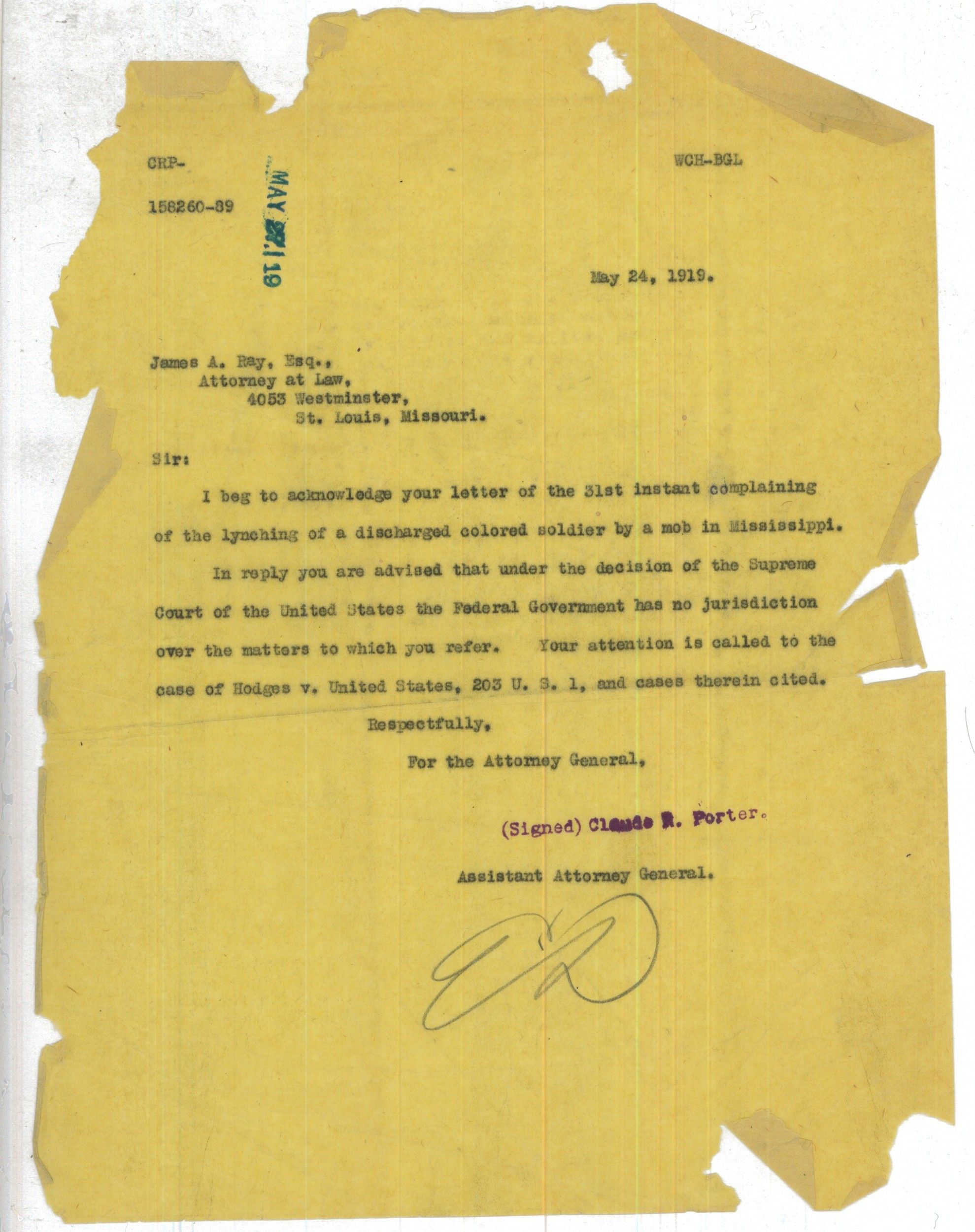
Document
Negro draftees ready for service. Lexington, Kentucky.
1917
The full caption for this photograph reads; Negro draftees ready for service. Lexington, Kentucky.
This primary source comes from the Records of the War Department General and Special Staffs.
National Archives Identifier: 533545
Full Citation: Photograph 165-WW-127(59); Negro draftees ready for service. Lexington, Kentucky.; 1917; American Unofficial Collection of World War I Photographs, 1917 - 1918; Records of the War Department General and Special Staffs, ; National Archives at College Park, College Park, MD. [Online Version, https://docsteach.org/documents/document/negro-draftees-service, April 26, 2024]Negro draftees ready for service. Lexington, Kentucky.
Page 1
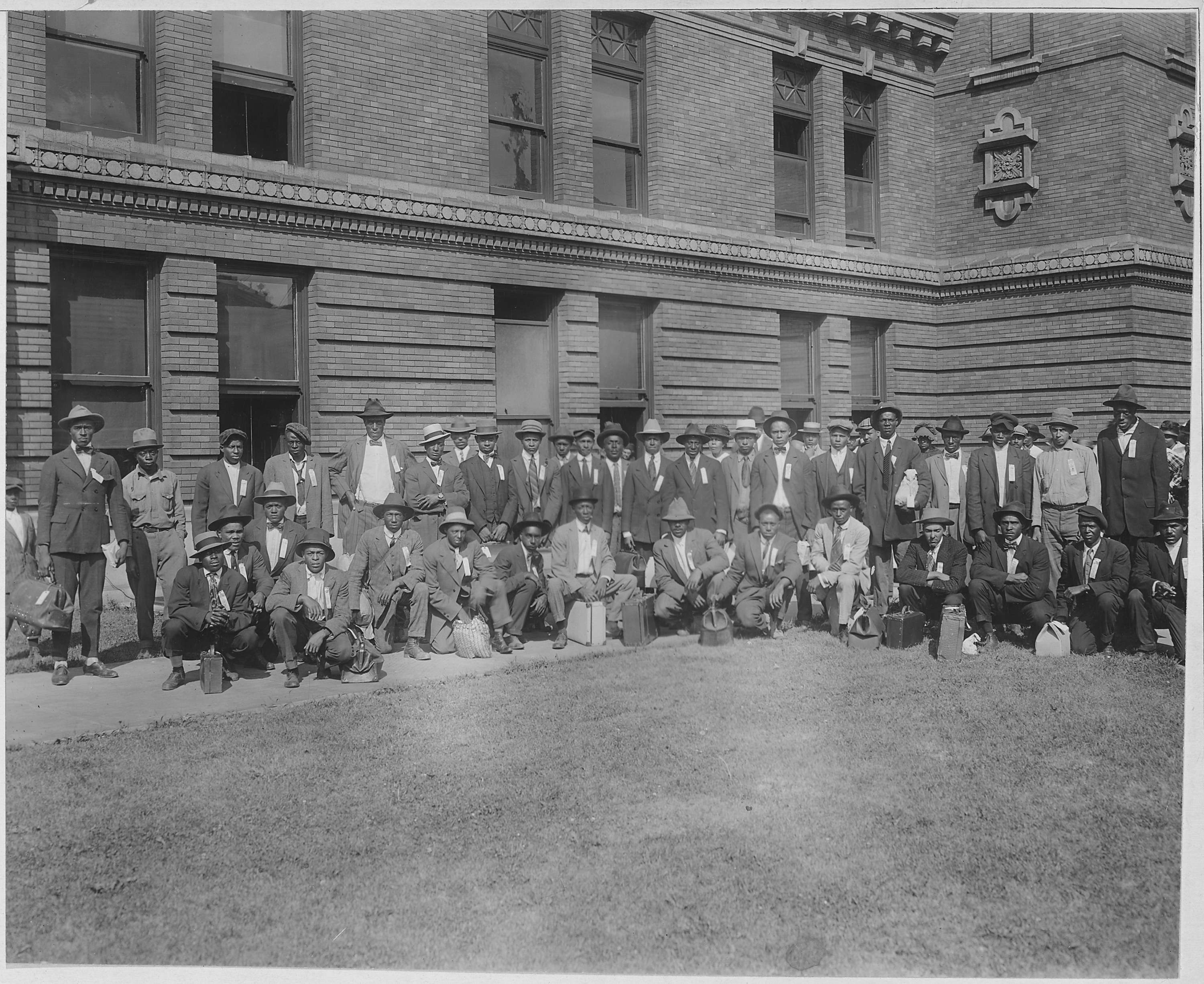
Document
Manufacturing spiral puttees at plant of Alexander Propper & Company, New York City. Preparing the puttees for bailing. [African-American women working.]
11/4/1918
This image shows African-American women working to manufacture spiral puttees at the Alexander Propper & Company plant in New York City. The women are preparing the puttees for bailing.
The photograph comes from a series of photographs from the Historical Branch of the War Plans Division in the War Department. The images were assembled by the Committee for Public Information and considered to be the "Unofficial Collection of World War I Photographs."
The photograph comes from a series of photographs from the Historical Branch of the War Plans Division in the War Department. The images were assembled by the Committee for Public Information and considered to be the "Unofficial Collection of World War I Photographs."
This primary source comes from the Records of the War Department General and Special Staffs.
National Archives Identifier: 533756
Full Citation: Photograph 165-WW-585(11); Manufacturing spiral puttees at plant of Alexander Propper & Company, New York City. Preparing the puttees for bailing. [African-American women working.]; 11/4/1918 ; American Unofficial Collection of World War I Photographs, 1917 - 1918; Records of the War Department General and Special Staffs, ; National Archives at College Park, College Park, MD. [Online Version, https://docsteach.org/documents/document/manufacturing-spiral-puttees, April 26, 2024]Manufacturing spiral puttees at plant of Alexander Propper & Company, New York City. Preparing the puttees for bailing. [African-American women working.]
Page 1
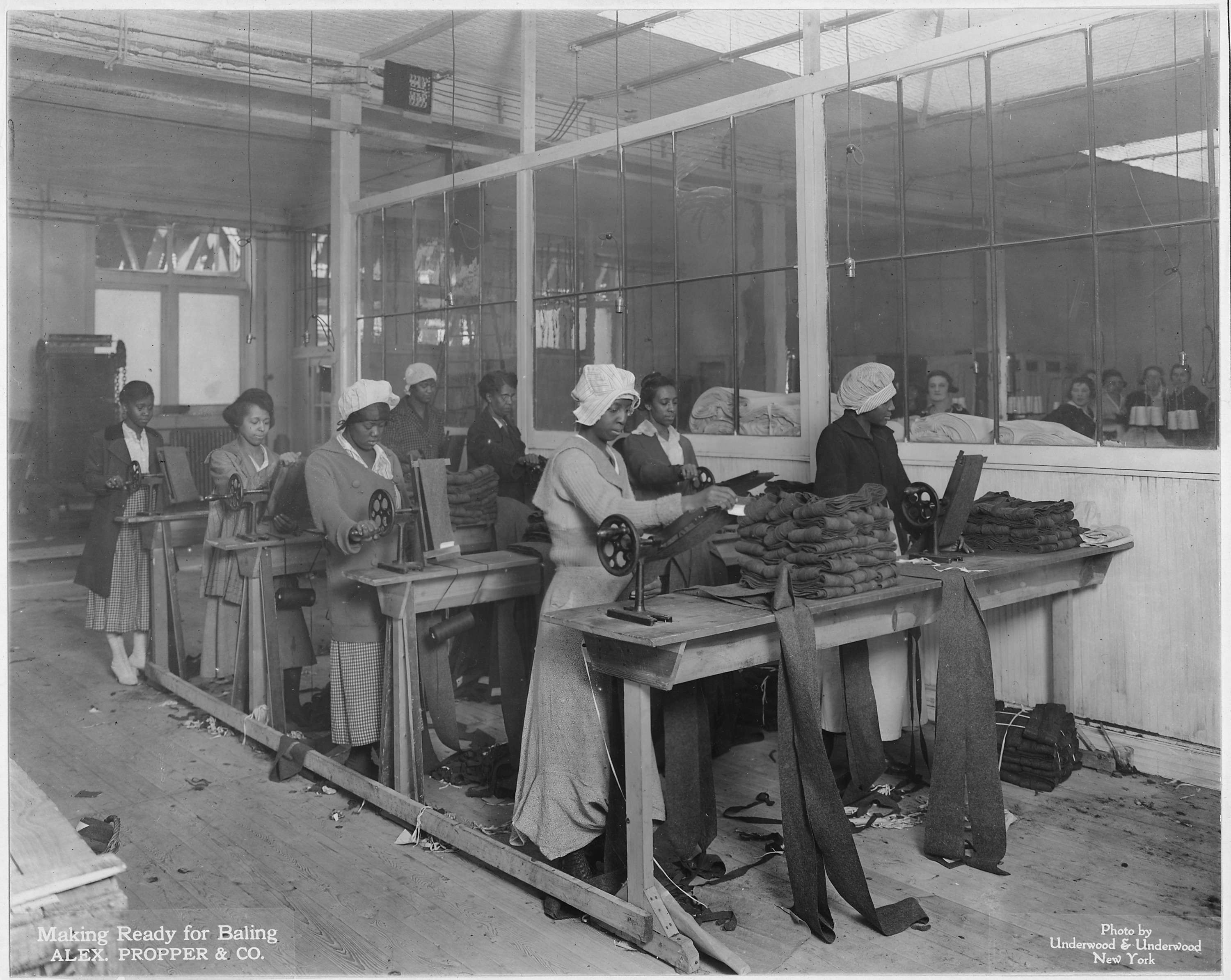
Document
American Negro battalion building railroad. American Negro soldiers building a railroad in France
ca. 1917 - 1919
The original description for this photograph reads; American Negro battalion building railroad. American Negro soldiers building a railroad in France.
This primary source comes from the Records of the War Department General and Special Staffs.
National Archives Identifier: 533603
Full Citation: Photograph 165-WW-127(111); American Negro battalion building railroad. American Negro soldiers building a railroad in France; ca. 1917 - 1919; American Unofficial Collection of World War I Photographs, 1917 - 1918; Records of the War Department General and Special Staffs, ; National Archives at College Park, College Park, MD. [Online Version, https://docsteach.org/documents/document/negro-battalion-railroad-france, April 26, 2024]American Negro battalion building railroad. American Negro soldiers building a railroad in France
Page 1
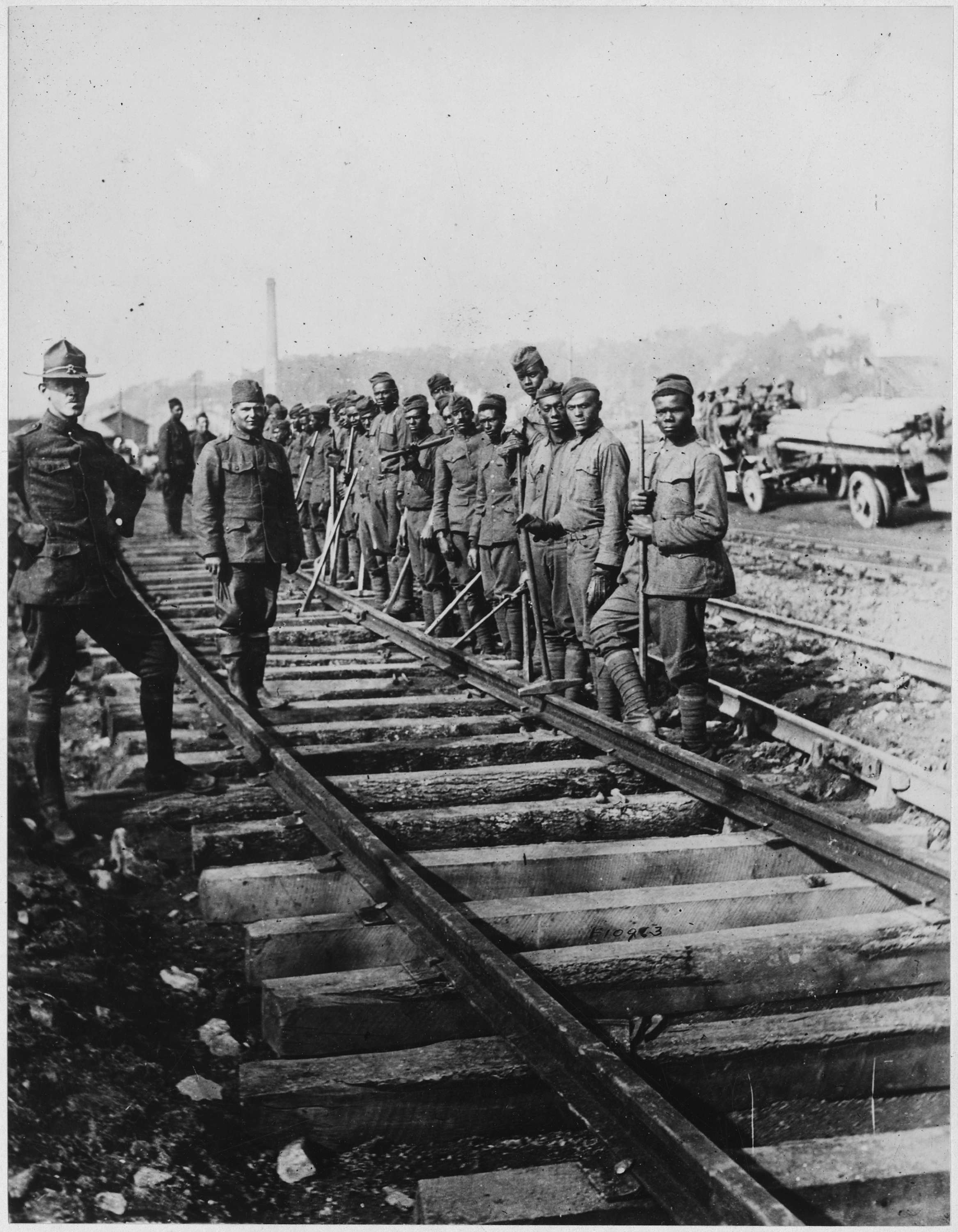
Document
How they did it over there. [African American] troops of the 505th Engineers that returned on S.S. ...
5/26/1919
The full caption for this item is as follows: How they did it over there. [African American] troops of the 505th Engineers that returned on S.S. Roma showing how they used cold steel on the Huns.
This primary source comes from the Records of the War Department General and Special Staffs.
National Archives Identifier: 533525
Full Citation: Photograph 165-WW-431(P1487); How they did it over there. [African American] troops of the 505th Engineers that returned on S.S. ...; 5/26/1919; American Unofficial Collection of World War I Photographs, 1917 - 1918; Records of the War Department General and Special Staffs, ; National Archives at College Park, College Park, MD. [Online Version, https://docsteach.org/documents/document/how-over-there, April 26, 2024]How they did it over there. [African American] troops of the 505th Engineers that returned on S.S. ...
Page 1
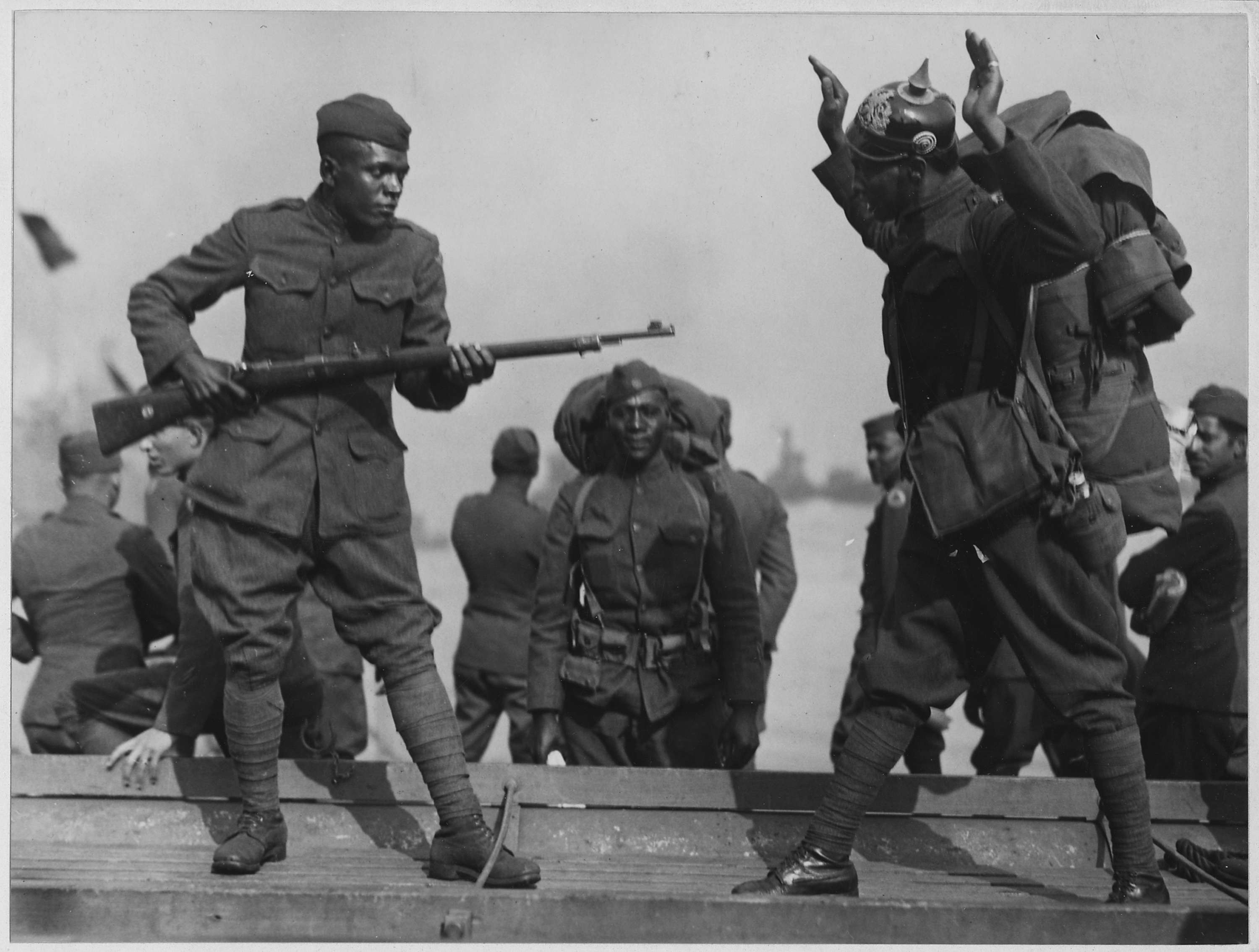
Document
Two Americans win Croix De Guerre. These African American fighters routed a German raiding party numerically stronger. The two men, Henry Johnson, left, and Neadham Roberts, right, are members of the 369th Regiment Infantry. Each has been decorated w
1917 - ca. 1919
The full caption for this item is as follows: Two American Negroes win Croix De Guerre. These [African American] fighters routed a German raiding party numerically stronger. The two men, Henry Johnson, left, and Neadham Roberts, right, are members of the 369th Regiment Infantry. Each has been decorated with the French Croix de Guerre.
The 369th Infantry Regiment, more famously known as the Harlem Hellfighters, was an infantry regiment during World War I. The regiment is well known for its participation in several key battles including Champagne-Marne, Aisne-Marne, Belleau Wood, Chateau-Thierry and Meuse-Argonne. By the end of the 369th Infantry’s campaign, they suffered 1,500 casualties, the highest of any U.S. regiment. They also spent 191 days in front-line trenches, longer than any unit of their size. Upon the regiment’s arrival in the United States, they were celebrated with a parade in New York City.
The 369th Infantry Regiment, more famously known as the Harlem Hellfighters, was an infantry regiment during World War I. The regiment is well known for its participation in several key battles including Champagne-Marne, Aisne-Marne, Belleau Wood, Chateau-Thierry and Meuse-Argonne. By the end of the 369th Infantry’s campaign, they suffered 1,500 casualties, the highest of any U.S. regiment. They also spent 191 days in front-line trenches, longer than any unit of their size. Upon the regiment’s arrival in the United States, they were celebrated with a parade in New York City.
The members of the 369th Infantry Regiment, despite facing racism at home and in the military, served their country honorably. Their dedicated service played a key role in the success of the United States’ participation in World War I. Over 100 soldiers were presented with American and French decorations. Honors and awards given to the Harlem Hellfighters include, one Medal of Honor, numerous Distinguished Service Crosses, 170 individual Croix de Guerre, a regimental Croix de Guerre, and several unit citations. The Regiment was awarded the Congressional Gold Medal in August 2021.
This primary source comes from the Records of the War Department General and Special Staffs.
National Archives Identifier: 533523
Full Citation: Photograph 165-WW-127(38); Two Americans win Croix De Guerre. These African American fighters routed a German raiding party numerically stronger. The two men, Henry Johnson, left, and Neadham Roberts, right, are members of the 369th Regiment Infantry. Each has been decorated w; 1917 - ca. 1919; American Unofficial Collection of World War I Photographs, 1917 - 1918; Records of the War Department General and Special Staffs, ; National Archives at College Park, College Park, MD. [Online Version, https://docsteach.org/documents/document/americans-croix-de-guerre, April 26, 2024]Two Americans win Croix De Guerre. These African American fighters routed a German raiding party numerically stronger. The two men, Henry Johnson, left, and Neadham Roberts, right, are members of the 369th Regiment Infantry. Each has been decorated w
Page 1
